




Citizen staff
Households near the corner of Strathcona and Norwood in the VLA awoke early Friday morning to the sound of gunfire from an apparent drug-related drive-by shooting.
A neighbour, who asked his name not be used, said he heard a long succession of shots just before 6 a.m. as he was about to leave for work. At the RCMP’s request, he stayed at home for the day.
“It was loud,” he said. “Boom, boom, boom, boom, boom.”
He figured about 40 shots were fired from what sounded like a semi-automatic rifle.
“Definitely an interesting morning,” he said. “Not what you expect when you open your door to go for work.”
He and his girlfriend had moved into their home about a half block away only on Monday. They had heard about the area’s reputation and now it’s been confirmed.
Another neighbour said the shots were loud enough to wake him up. He heard about six shots while his kids may have heard more.
He said it appeared the home’s occupants had been dealing in drugs.
RCMP said no one was injured in what they described as a targeted shooting. The modest 1300-block Strathcona Avenue home was behind police tape while police scoured the property for evidence.


Mark NIELSEN Citizen staff
mnielsen@pgcitizen.ca
An upward trend in Prince George for the average price of a single-family home continues to be offset by a decline in the number of sales so far this year, according to a B.C. Northern Real Estate Board report issued Friday.
As of the end of the third quarter, the average price stood at $354,751 – a rise of

$36,866 or 11.6 per cent over the reigning price by the same point last year. However, that was offset by a 95-unit or 11.8-percent decline in sales to 710, working out to $251.9 million of activity, a $4-million or 1.6 per cent decrease.
Real estate agent Bob Quinlan explained the apparent divergence as a function of buyers willing to pay for what they want and being willing to wait to get it.
“If they don’t get that house, even in competing offers, they’re not going to default
back to the second one in line,” he said.
Looking ahead, Quinlan predicted both sales and average price will continue on the same levels.
“If anything is not in good condition, people are going to beat it up,” he said. “If anything is in real nice condition, it’ll go for a premium. The majority of the public wants everything fixed and finished. There is only a small percentage that will go in and do a fixer-upper and flip it.”
Quinlan said he is pretty sure the Bank of Canada will increase the interest rate sometime this month but added the banks continue to offer great discounts on variable rates while five-year fixed rates stand at 3.5 to 3.9 per cent – well down from the so-called traditional levels.
Sales were most brisk in the city’s southwest where 212 single-family homes sold and the median price was $428,000, compared to 216 homes and $312,000 by the same point last year.
— see PROPERTY SALES, page 2



Fans of John Mellencamp will have a way to celebrate his birthday this weekend – and save a few dollars on tickets to his upcoming show in the process.
The crowd-pleasing Jack & Diane and Lonely Ol’ Night singer is turning 67 years old
on Sunday and in keeping with that spirit, tickets regularly worth $85 will instead be on sale for $67. The offer runs from 12:01 a.m. on Saturday to 11:59 p.m. on Monday and the promotion can be accessed at www.ticketsnorth.ca. The promotion code is “birthday” and the offer is limited to sections A to E at the back of the
bowl at CN Centre.
Tickets outside those sections range from $55 to $70 to $85.
The show is set for Nov. 4 and is part of his Sad Clowns and Hillbillies Tour which has been hailed by critics and fans alike as one of Mellencamp’s most authentic and crowd pleasing concerts of his career.

from page 1
In the western part of the city, the median price of the 206 homes sold this year was $312,000, compared to 229 for $282,000. North of the Nechako, the count was 142 homes sold and a median price of $366,250, compared to 181 and $322,000 East of Central Street, 142 homes sold with a median price of $255,000, compared to 168 for $230,000.
Looking at properties of all types, 1,082 worth $341.3 million changed hands, compared with 1,238 properties worth $358.5 million by the same point last year. At the end of September, there were 607 properties of all types available for purchase in Prince George through the Multiple Listing Service, down slightly from 624 at the end of September 2017.
The 20th annual Greenway Trail walk and run is set for Sunday. Registration takes place at the Otway Nordic Centre, starting at 8:15 a.m., and participants will carpool to the trailhead at UNBC. Walkers carpool from Otway at 8:30 a.m. and runners at 9:30 a.m. The trail’s length is 18 kilometres and there will be an aid station at the 10km point where the trail meets Takla Road.
Cost is a donation to the Cranbrook Hill Greenway Society and a food item for the post-event snacks. For more info, call Dick Voneugen at 250-962-7672.




Mark NIELSEN Citizen staff mnielsen@pgcitizen.ca
New home construction has continued to be the key driver in the city’s building permit figures.
As of the end of August, permits for $57.8 million worth of new homes have been taken out, according to a report from city hall, accounting for nearly 40 per cent of the $147 million reached for all construction in the city by that point.
However, at 104 the number of permits for new homes remained essentially the same as it has over the last three years, Canadian Homebuilders AssociationNorthern B.C. past president Jody Tindill noted.
months,” she said. “We should see more permits in October as is typical for builders to get foundations in earlier to start heating them for the winter builds.”
But she also said more home buyers are finding new homes are out of reach due to rising costs, changes to lending rules and increasing interest rates. She said more new homes are holding secondary suites to act as a mortgage helper.
We had a shorter building season this year due to a persistent winter and it put extra pressure on the April-September months.
— Jody Tindill
Nonetheless, she said the market seems to be in reasonable shape with builders “very busy gearing up for winter.”
“We had a shorter building season this year due to a persistent winter and it put extra pressure on the April-September
And while she welcomed the LNG Canada project, saying Prince George stands to benefit, it will also further heighten a demand for skilled labour already at a premium due to Site C, several large multi-family projects at once in P.G., and other industrial opportunities in the region.
“The residential construction industry is suffering with a shortage of all trades due to these projects,” Tindill said. “This may slow production in the short term until the labour market adjusts or some of the larger projects move into other phases.”
Citizen staff
The Prince George RCMP is urging the public to be wary of a pyramid scheme posing as a “gifting circle.”
It targets groups of law-abiding citizens who are convinced to recruit friends and acquaintances.
New members must pay their recruiter a $5,000 “gift” to join and each member is then expected to recruit eight new people, so everyone would eventually end up with $40,000.
Recruiters attempt to legitimize the buy-in payment by insisting that it is not taxable or illegal because it is only a gift and often the victims do not realize that they are doing anything illegal.
The scheme, also known as a “birthday gift,” a “cloud,” “people helping people” and “New Boss Life,” has been reported in a number of Western Canadian cities.
In July, two Maple Ridge women were formally charged under the Criminal Code for allegedly running the scam.
RCMP said Chrystal Lee Lyons, 44, and Esther Ayshia Vandenbrink, 56, were repeatedly warned for a year that the scheme is illegal before they were charged. Lyons faces four counts of conducting or managing a lottery or game of chance and Vandenbrink faces one count.
Information on common frauds can be found online at the Canadian Anti-Fraud Centre website.


Alan FRAM, Lisa MASCARO Citizen news service
WASHINGTON — After weeks of shocking accusations, hardball politics and rowdy Capitol protests, a pair of wavering senators declared Friday they will back Brett Kavanaugh’s Supreme Court confirmation, all but guaranteeing the deeply riven Senate will elevate the conservative jurist to the United States’ highest court today.
The announcements by Republican Susan Collins of Maine and Democrat Joe Manchin of West Virginia ended most of the suspense over a political battle that has transfixed the nation – though die-hard Democrats insisted on arguing through the night to a mostly empty Senate chamber. Some of them continued raising concerns that Kavanaugh would push the court further to the right, including with possible sympathetic rulings for President Donald Trump, the man who nominated him. But the case against Kavanaugh had long since been taken over by allegations that he sexually abused women decades ago – accusations he emphatically denied.
In the pivotal moment Friday, Collins, perhaps the chamber’s most moderate Republican, proclaimed her support for Kavanaugh at the end of a Senate floor speech that lasted nearly 45 minutes. While she was among a handful of Republicans


describing Kavanaugh’s alleged 1982 assault was “sincere, painful and compelling.”
But she said the FBI had found no corroborating evidence from witnesses whose names Ford had provided.
“We will be ill-served in the long run if we abandon the presumption of innocence and fairness, tempting though it may be,” she said. “We must always remember that it is when passions are most inflamed that fairness is most in jeopardy.”
Those passions were on full display this week in a fight that could energize both parties’ voters in elections for control of Congress just five weeks away. The showdown drew raucous demonstrators – largely anti-Kavanaugh – to the Capitol, where they raised tensions by repeatedly confronting lawmakers despite an intensified police presence. Another 101 protesters were arrested Friday, the U.S. Capitol Police said.
It’s all expected to conclude this afternoon with a final roll call almost solidly along party lines. That would mark an anticlimactic finale to a clash fought against the backdrop of the #MeToo movement and Trump’s unyielding support of the nominee, opposing forces that left Kavanaugh’s fate in doubt for weeks.
Manchin, the only remaining undeclared lawmaker, used an emailed statement to announce his support for Kavanaugh moments after Collins finished talking, making him the only Democrat supporting the
nominee. Manchin faces a competitive reelection race next month in a state Trump carried in 2016 by 42 percentage points.
“My heart goes out to anyone who has experienced any type of sexual assault in their life,” Manchin said. But he added that based on the FBI report, “I have found Judge Kavanaugh to be a qualified jurist who will follow the Constitution and determine cases based on the legal findings before him.” Protesters chanted “Shame” at Manchin later when he talked to reporters outside his office.
Republicans control the Senate by a meagre 51-49 margin. Support from Collins and Manchin would give Kavanaugh at least 51 votes.
Three female GOP senators – Jodi Ernst of Iowa, West Virginia’s Shelley Moore Capito and Cindy Hyde-Smith of Mississippi, sat directly behind Collins as she spoke. Majority Leader Mitch McConnell of Kentucky sat directly in front of Collins and pivoted his seat around to face her. A few Democrats sat stone-faced nearby. When she finished, Collins received applause from the roughly two dozen GOP senators present.
Republican Lisa Murkowski of Alaska, a fellow moderate and a friend of Collins, is the only Republican who has indicated she will vote no. She told reporters that Kavanaugh is “a good man” but maybe “not the right man for the court at this time.”
Colin PERKEL Citizen news service
NAPANEE, Ont. — A minor weapon charge against notorious killer and serial rapist Paul Bernardo was withdrawn on Friday almost two weeks before an expected parole hearing at which the dangerous offender will plead for release having spent more than 25 years behind bars, most in solitary confinement.
The prosecution said there was no reasonable prospect of convicting Bernardo of having a “shank” in his maximum-security cell – a five-centimetre deck screw attached to a ballpoint pen his lawyer suggested was planted either by other inmates or guards.
“As you know, he’s reviled not by just people out of jail but by people in jail,” Fergus (Chip) O’Connor said outside court. “He had no knowledge of it being there. There were many opportunities for many other people to have placed it there.”
Dressed in a blue T-shirt, Bernardo watched the short Ontario court proceedings via video link. He showed little outward emotion and politely answered brief questions as O’Connor began making what will likely be his parole pitch.
His client, he said, has been of good behaviour in “very hard conditions of confinement” and has the support of his “loving parents,” who visit him regularly. Bernardo, O’Connor said, has made a “determined effort not to make up for what he’s done –for that can never be done – but to improve himself.”
Also known as the “Scarborough rapist,” the now 54-year-old Bernardo was convicted in 1995 of the first-degree murders of two teen girls and numerous sexual assaults. He was labelled a dangerous offender and was not eligible for parole until he had served 25 years since his arrest in southern Ontario in early 1993.
Despite becoming eligible for day parole in February, he has never been out, spending almost all his time in protective custody or solitary confinement at an institution in Bath, Ont.
Self-described activist Linda Beaudoin, of Mississauga, Ont., arrived at the courthouse hoping the prisoner would be there to see the placards she had attached to her car. Bernardo, she said, should not be in protective custody.
“Why should we protect these child rapists and child killers? Why?” Beaudoin said. “There’s no protection for victims. None. So we need to deter future criminals from doing these sorts of things.”
O’Connor said Bernardo has been paying for his “horrific” crimes, and the parole board will have to look at what has happened since his client’s arrest in early 1993.
“Their decision will be not how much he

should suffer, but does he present a risk,” O’Connor said. “The rule of law must prevail. The issue is not just desserts, the issue is risk.” Bernardo’s sadistic sex crimes, some of which he videotaped, sparked widespread terror and revulsion.
He kidnapped, tortured and killed Leslie Mahaffy, 14, of Burlington, Ont., in June 1991 at his home in Port Dalhousie, Ont., before dismembering her body, encasing her remains in cement and discarding them in a nearby lake. He tortured and killed Kristen French, 15, of St. Catharines, Ont., in April 1992 after keeping her captive for three days.
Bernardo’s then-wife, Karla Homolka, was complicit. In return for testifying against him, she served 12 years until 2005 after pleading guilty to manslaughter in what critics branded as a “deal with the devil.” Homolka is now a mother herself, and last year it was revealed she had been volunteering at a Montreal-area elementary school, prompting it to revise its policies. Bernardo, who admitted to raping 14 other women, was later convicted of manslaughter in the December 1990 death of Homolka’s younger sister, Tammy. The 15-year-old girl died after the pair drugged her and sexually assaulted her while she was unconscious. Homolka would later say she wanted to give Tammy’s virginity to Bernardo for Christmas.
“He’s as horrified as you and I are at what he did,” O’Connor said. “The fact is he has over the 25 years experienced personal growth, he has at times seemed to blame others, burdened down by his own guilt. I expect that he will take full responsibility, express remorse, and he appears to be sincere in that.”

B.C. man charged for running alleged prostitution ring
DELTA (CP) — Charges of human trafficking, prostitution and assault have been laid against a man who allegedly victimized underage girls in Delta, and police say there are possible connections to teens in Calgary.
The Delta Police Department says 35-year-old Mohammed Begg was arrested this week following an investigation stemming from a tip in 2017 that identified a North Delta home used for prostitution of girls who appeared to be underage.
A release from the department says the prostitution operation was advertised on social media sites and that police removed a teenage girl who was brought into the care of the Children’s Ministry and a guardian.
Police say an investigation identified three victims, and two of them were underage.
Staff Sgt. Heath Newton says other girls may have been caught up in the operation that appeared to involve transporting girls between the Metro Vancouver area and Calgary.
Police say another person considered a perpetrator in the prostitution ring died due to an unrelated incident prior to charges being approved by the Crown.
Three homicide cases in Lower Mainland in 24 hours
CHILLIWACK (CP) — Homicide investigators on the Lower Mainland responded to their third case in less than 24 hours Thursday as they were called to a fatal shooting in B.C.’s Fraser Valley.
The Integrated Homicide Investigation Team has released few details, but says in a tweet that the shooting occurred in Chilliwack just after 2 p.m. and the victim did not survive.
Corporal Frank Jang says it’s too early to tell if the shooting is related to the attack late Wednesday night outside a busy Mission shopping mall that left 19-year-old Varinderpal Gill dead of gunshot wounds.
Abbotsford police took the unusual step of issuing a public warning about Gill in August, saying his gang-related activities made his presence in public places a “serious risk to public safety.” Jang said Thursday that one person was in custody and was being questioned about Gill’s shooting, but charges had not been laid.
The homicide team was also called to a Richmond home early Thursday where Jang confirms 19-year-old Aspen Pallot was found dead and a man who was known to her was taken into custody in connection with the suspicious death.
(CP) — Edmonton police say the teenage girl who was the subject of an Amber Alert has been found safe in the city.
Police say the 14-year-old was forcibly abducted Friday afternoon northeast of the city’s downtown.
Police say she was later found in northwest Edmonton and the Amber Alert has been cancelled. Investigators say she was taken by a 40-year-old white man who was driving a red-coloured sedan.
Police say Jacques Sennesael is a suspect and warned people he may be armed and dangerous. No further information about the suspect or the girl has been released.
JASPER (CP) — Alberta RCMP are investigating the death of a tour bus driver in the Columbia Icefields in Jasper National Park.
Police say the 52-year-old woman was standing outside of her bus Thursday afternoon in a parking lot when she was struck by the vehicle.
Paramedics were flown in by helicopter to the remote location but the woman died of her injuries at the scene. Police say the bus also struck four parked vehicles before it stopped.
ST. PAUL, Alta. (CP) — The RCMP major crimes unit is investigating after the body of a missing Indigenous woman was found in east-central Alberta.
Dead is Lindsay Marie Jackson.
Police say her body was found Wednesday in the North Saskatchewan River near Duvernay. Jackson, who was 25, was last seen alive on Sept. 22 in her home community of the Saddle Creek Cree Nation. The cause of death has not been released and police have not determined if it is a homicide.
WINNIPEG (CP) — Manitoba’s police watchdog says two RCMP officers won’t face charges following an investigation into possible impaired driving off-duty.
The Independent Investigation Unit says the RCMP received a report last year that two off-duty officers attended a party in the Rural Municipality of Whitemouth and drank at a member’s home. It was alleged they then drove their personal vehicles at high speeds and did doughnuts on Highway 44. The IIU concluded there was insufficient evidence for charges, and civilian director Zane Tessler says delays in making the complaint made it harder for investigators to collect evidence.



Mike BLANCHFIELD Citizen news service
OTTAWA — China says it deplores a controversial new clause in the United States-MexicoCanada Agreement that calls on the countries to notify each other if they enter into trade talks with a “non-market” economy.
In a scathing statement, the Chinese Embassy in Ottawa says section 32.10 of the new USMCA amounts to an act of political dominance by the U.S., which it blames for inserting the clause some argue gives the Americans a veto over Canada and Mexico pursuing free trade with China.
The Trump administration is embroiled in a trade war with China and has slapped tariffs on hundreds of billions of dollars worth of Chinese goods, prompting retaliation from Beijing.
Now, China says the White House is using the contentious clause in the new agreement with Canada and Mexico to prevent those countries from trading with it. While the clause does not mention China specifically, the provision is being widely seen as an attempt to single out Beijing.
China has no doubt it is the target of the clause, which requires an USMCA member country to provide notice and information to the other two partners if it plans free trade talks with a “nonmarket” economy. It also gives the
China says the White House is using the contentious clause in the new agreement with Canada and Mexico to prevent those countries from trading with it.
other partners a say in the text of such a deal.
In a statement to The Canadian Press, Chinese Embassy spokesman Yang Yundong calls the move “dishonest behaviour” that blatantly interferes with the sovereignty of other countries.
China disputes that it is a nonmarket economy, saying it is a member in good standing of the World Trade Organization.
“China firmly supports the multilateral trading system with the World Trade Organization (WTO) at its core and props up an open world economy,” said Yang.
“We oppose to fabricating the concepts of ‘market country’ and ‘non-market country’ outside the framework of WTO, which in essence is the excuse made by some countries to shirk their obligations and refuse to meet their international commitments.”
China will continue to pursue commerce with other countries in the face of “trade restrictions,” added Yang.
“China will consistently pursue opening-up at its own pace and continuously carry out mutually beneficial and win-win economic and trade cooperation with countries worldwide treating it
in an equal-footed and friendly way.”
In an interview with Reuters published Friday, U.S. Commerce Secretary Wilbur Ross said the USMCA pact’s “poison pill” provision to deter deals with China was a move to try to close loopholes in trade agreements that have served to legitimize China’s trade, intellectual property and industrial subsidy practices.
Conservative MP Michael Chong accused the Liberals of giving up a significant degree of sovereignty in the USMCA deal.
“We now have to ask for Washington’s permission to enter into trade negotiations with certain countries that the U.S will designate as non-market countries,” he said Friday.
“It literally makes us a vassal state of the Americans.”
A spokesman for Foreign Affairs Minister Chrystia Freeland repeated the government’s view that nothing in the new trade agreement would prevent Canada from deepening its trade ties with other countries.
Jim Carr, the international trade diversification minister, also played down concerns about China’s comments.

It is common these days to find news outlets that run features under headlines like: “A look at what didn’t happen this week.”
Journalism never used to worry about what didn’t happen.
Airplanes that landed safely —and didn’t crash — never made the news.
But we live in the age of Fake News, with the reality that false information spreads quickly around the world, causing damage that ranges from disrupting democratic elections to tarnishing the reputations of countless innocent individuals.
It has reminded us that in-depth, credible, independent reporting done by trusted news sources is more important than ever.
We have a job to do.
A small part of that job is fighting Fake News by revealing the truth.
No, Justin Timberlake did not say pedophiles control the music industry and no, Canada does not impose a 35 per cent tariff on vacuum cleaners from the United States, as some supporters of U.S. President Donald Trump have claimed.
The biggest part of the job is to be your trusted source, to work every day to bring you real news, which is as vital to democracy as clean air, safe streets, good schools and public health. To misquote Mark Twain, reports of the death of newspapers are greatly exaggerated.
But it isn’t getting any easier.
The business of bringing you the news— in print, on your phone, your tablet or your desktop computer—is challenged as it has never been before.
In the digital age, our audiences are larger than ever.
There is a steady desire for news and information.
But paying for it—maintaining the strong newsrooms that tell the stories of our communities—is harder and harder.
Advertisers have shifted much of their money to global giants that don’t spend money on reporting, whether it’s what happens on Parliament Hill or at City Hall.
We are seeking new business models that

The current referendum on proportional representation (PR) is not something that should be taken lightly. In time, both systems filter out parties that gain the majority.
First past the post systems, given enough time will eventually end up with a system where two parties dominate the landscape and switch back and forth as the dominant party from election to election. In Canada, the Liberals, Conservatives and the NDP dominate most of the electoral landscape.
Proportional representation systems, given enough time will eventually end up with a multiple party system where fringe parties gain dominance.
In the European Union almost every country uses PR. What is happening there is that the mainstream parties are loosing ground rapidly and extreme right wing parties are gaining ground rapidly; these include anti-immigration parties, racist parties, and even Neo-Nazi leaning parties that use differing party names. This is largely due to instability in government, fallout from the 2008 financial crash, and the high unemployment that resulted. In every European state that uses pro rep in Europe, there are today Neo Nazi parties sitting in their parliaments.
Adopting a proportional representation electoral system in B.C. would potentially open the doors of the legislature to far-right politicians, just like what is happening in the European Union.
The NDP party is a left-leaning party, so in fact they are trying
to create a voting system that in the long run could lead to their demise, if far right politicians gain voter support at some time in the future.
The most important concern that most people should have about the proportional representation referendum is the way that it is being conducted. At least one court case is contesting this; unfortunately it will not be heard until after the referendum is completed, due to a high case load at the Supreme Court of B.C.
In 2009, a referendum was done at the same time as the Provincial election and was a part of the electoral ballot. The referendum would have required 60 per cent overall approval and 50 per cent approval in at least 60 per cent (51 out of 85) of the province’s electoral districts in order to succeed. However, the province’s voters defeated the change with only 39.09 per cent of 1,651,139 votes in favour of change (representing a 55 per cent voter turnout).
This referendum is not by riding, rather it is by every valid returned vote in the province; this gives the population of Greater Vancouver a huge advantage over the population of the rural ridings. It has been estimated that in rural ridings that 70 to 90 per cent of the mailed in ballots must vote against PR just to balance out this serious population disparity.
The referendum, if allowed to proceed as determined, offends several core values grounding Section 3 of the Canadian Charter
of Rights, one being equality of voting power of which the courts have described as fundamental to the Canadian concept of democracy.
One thing that is missing from the information that is needed to make an informed decision is the fact that the size of the new ridings could be huge. This will be decided after the referendum? This effectively means that your local MLA office will be closed and the new MLAs may not even live in your area.
The second thing to make note of is the claim that another referendum will be held after two general elections to see if B.C. wants to keep the new voting system or go back to using first past the post.
The fact is one government can not bind the future action of a future government. Government, including this one, can amend the legislation they passed last year and change it, never mind a new government after the next election. So a new referendum may never happen.
It is expected that the voter response will be low and if this happens only 15 per cent of the registered voters could decide how we vote moving forward. Therefore, now is not the time to not vote because you are happy with the current voting system. During this referendum, the voters that are happy with the current system must pay heed to the fact that their votes are needed to keep the voting system the same as it is.
Glenn Martin Terrace
LETTERS WELCOME: The Prince George Citizen welcomes letters to the editor from our readers. Submissions should be sent by email to: letters@pgcitizen.ca. No attachments, please. They can also be faxed to 250-960-2766, or mailed to 201-1777 Third Ave., Prince George, B.C. V2L 3G7. Maximum length is 750 words and writers are limited to one submission every week. We will edit letters only to ensure clarity, good taste, for legal reasons, and occasionally for length. Although we will not include your address and telephone number in the paper, we need both for verification purposes. Unsigned letters will not be published. The Prince George Citizen is a member of the National Newsmedia Council, which is an independent organization established to deal with acceptable journalistic practices and ethical behaviour. If you have concerns about editorial content, please contact Neil Godbout (ngodbout@pgcitizen.ca or 250-960-2759). If you are not satisfied with the response and wish to file a formal complaint, visit the web site at mediacouncil.ca or call toll-free 1-844-877-1163 for additional information.
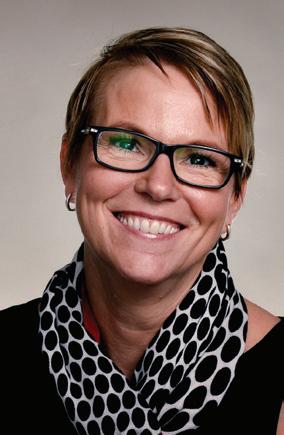

Mailing address: 201-1777 Third Ave. Prince George, B.C. V2L 3G7
Office hours: 9:00 a.m. to 5:00 p.m., Monday to Friday General switchboard: 250-562-2441 info@pgcitizen.ca General news: news@pgcitizen.ca Sports inquiries: 250-960-2764 sports@pgcitizen.ca
Classifieds advertising: 250-562-6666 cls@pgcitizen.ca
can continue to do the hard work of independent journalism across Canada—and asking for your help to secure a future in which real news remains strong. During National Newspaper Week 2018, we’re asking you to show your support for the Canadian news media industry. Let’s send a message—to businesses, to government, to journalists across Canada— that newspapers matter. Now more than ever.
Pledge your support at www.newspapersmatter.ca
— Bob Cox is the publisher of the Winnipeg Free Press and chair of the board of News Media Canada, of which The Citizen is a member.
The United StatesMexico-Canada Agreement (USMCA) is more than just an updated version of the North American Free Trade Agreement. With the inclusion of a digital trade chapter, the deal sets a new standard for e-commerce that seems likely to proliferate in similar agreements around the world.
Negotiators have touted the benefits of addressing modern forms of commerce, but the reality is that the USMCA’s digital trade chapter raises many concerns, locking in rules that will hamstring online policies for decades by restricting privacy safeguards and hampering efforts to establish new regulation in the digital environment.
Digital trade provisions are a relatively recent addition to the free-trade world, but they have quickly coalesced around a common approach.
Starting with the Trans-Pacific Partnership (since renamed the Comprehensive and Progressive Agreement for Trans Pacific Partnership with the U.S. exit last year), e-commerce or digital trade chapters have cropped up in large agreements such as the USMCA and little-known ones such as the recent Singapore-Sri Lanka trade agreement.
The chapters invariably include foundational principles such as certainty in electronic contracting, the validity of electronic signatures, nondiscriminatory treatment of digital services, and restrictions on imposing customs duties on digital products transmitted electronically.
So long as the provisions foster greater certainty for online trade, the chapters reflect well-established conventions and should be embraced.
The more problematic provisions, however, focus on the rules associated with data, where much of the value in digital trade lies.
For example, the USMCA includes rules that restrict data localization policies that can be used to require companies to store personal information within the local jurisdiction.
Jurisdictions concerned about lost privacy in the online environment have increasingly turned to data localization to ensure their local laws apply.
These include British Columbia and Nova Scotia, which have data localization requirements to keep sensitive health information at home that may be jeopardized by the agreement.
The digital trade chapter also bans restrictions on data transfers across borders.
That means countries cannot follow the European model of data protection that uses data transfer restrictions as a way to ensure that the information enjoys adequate legal protections.
In fact, with the European Union adopting even higher standard privacy rules earlier this year,
countries could find themselves caught in a global privacy battle in which Europe demands limits on data transfers while the USMCA prohibits them.
The data localization and data transfer rules may erode efforts to safeguard privacy, and many other provisions represent a lost opportunity to establish higher standards.
Indeed, as the United States touts high standard intellectual property protections in its trade agreements, it seemingly opts for low standard digital trade protections.
For example, the USMCA has a requirement to maintain antispam rules and online consumer protection laws. However, neither provision contains any specificity, meaning the requirements can be met without effective measures.
The same is true for personal information protection requirements, which call for a legal framework to protect the personal information of users of digital trade, but buried in a footnote is an acknowledgment that merely enforcing voluntary undertakings of enterprises related to privacy is sufficient to meet the obligation.
The provisions related to net neutrality similarly miss the mark. In fact, while the TPP specifically references net neutrality, the USMCA just establishes “principles on access to and use of the Internet for digital trade.”
None of the principles comes close to a comprehensive approach to net neutrality, and the provision falls well short of established laws in Canada.
An imperfect digital trade chapter would ordinarily mean little for global e-commerce. Yet the USMCA chapter builds on the TPP and effectively entrenches the approach as the model for digital trade in agreements worldwide. In fact, it seems likely that the same provisions will be used in multilateral instruments, including efforts at the World Trade Organization to establish similar e-commerce rules.
In doing so, a chapter that has never been subject to public scrutiny or debate, fails to reflect many global e-commerce norms, and may ultimately restrict policy flexibility on key privacy issues will have been quietly established as the go-to international approach.
Before the USMCA sets the standard to be used around the world for decades, there needs to be a renewed effort to ensure it meets the needs of a far broader array of businesses, consumers and domestic policymakers.
— Michael Geist holds the Canada research chair in Internet and e-commerce law at the University of Ottawa
Display advertising, digital advertising and website inquiries: 250-562-2441 ads@pgcitizen.ca Reader sales and services: 250-562-3301 rss@pgcitizen.ca Letters to the editor: letters@pgcitizen.ca
Website: www.pgcitizen.ca
Website feedback: digital@glaciermedia.ca


As recreational marijuana legalization looms, some industry insiders are predicting a hot niche in the market for less potent products.
At the centre of the shift is an expected influx of new consumers more interested in dabbling than getting blitzed, creating demand for pot products with lower doses of psychoactive ingredients.
A report by Deloitte forecasts that legalization on Oct. 17 will bring a consumer into the market who is more risk averse, older and less likely to consume the drug as regularly as existing recreational users.
“Today’s consumer is what we describe as a risk taker. They’re young, typically with a high school or college education. In their quest to live life to the fullest, they’re more likely to put their health or safety at risk, even going so far as to skirt or break the law,” it says.
Newer recreational customers will typically be 35 to 54 years old, and three-quarters of them will have some experience with recreational pot but only 41 per cent will have used it in the last five years, it says.
“This consumer is more of a conservative experimenter – typically middle-aged, with a university or graduate school education. They don’t tend to put their personal interests before family needs or other responsibilities,” the report says.
It says almost half of current consumers say they would move to the legal market if there were more choices in terms of product potency.
Producers are paying attention.
Andrew Pollock, vice-president of marketing for The Green Organic Dutchman said many consumers are asking for products with higher concentrations of nonpsychoactive cannabidiol, also know as CBD, rather than tetrahydrocannabinol, or THC, which is the main mind-altering ingredient in the plant.
“CBD is becoming kind of an ‘it’ word in cannabis. We see a real trend there,” Pollock said.
CBD and THC are some of the most common compounds found in marijuana.
Plants with high CBD give more clear-headed relief to symptoms of anxiety, pain and inflammation.
THC gives users a “high,” an appetite and relieves symptoms like pain and nausea, Pollock said.
“What we’re finding is more and more consumers are just looking for something to help them relax, to take away the stress, maybe to help them sleep. What most consumers are looking for in this day and age is calm,” he said.
The Green Organic Dutchman is building 130,000 square metres of cultivation facilities in Ontario, Quebec and Jamaica.
Ali Wasuk, store manager of WestCanna dispensary in Vancouver, says CBD products are already popular among the company’s medical clients, especially older users without recreational experience who are wary “getting high.”
“That crowd was the main one who kind of wanted to dabble, get their feet wet with the lower dose stuff,” he said. “Generally the medical side of it is mainly lower dose THC.”
South of the border, less potent products have already entered a market once dominated by black market pot that packed a punch.
“Products are now being scored and packaged and marked in low doses,” said Tom Adams, managing director of BDS Analytics in Colorado.
Part of that comes as a result of what industry members refer to as the “Maureen Dowd Effect,” he said. The New York Times columnist wrote a piece detailing her experience sampling a cannabis-infused chocolate from one of Colorado’s newly legal pot shops in 2014 that left her “curled in a hallucinatory state” for eight hours in her Denver hotel room.
Since then, the industry has made a concerted effort to cater lower-dose products to new users and emphasize responsible consumption, especially with edibles.
“The industry has very much harped on the theme of, ‘Start low, go slow,’ ” Adams said.
There are also regular users in the market who want to take some edge
off without getting high.
“(They say) two milligrams or three milligrams just has a mild relaxing effect and doesn’t interfere with you going about your day,” Adams said.
The shift is occurring mostly at the processing level where the plants are used to create concentrates, oils, edibles and other products, he said.
Some companies are banking on recreational consumers having less fluency in dosages or chemical components and who are instead looking for an “experience.”
Adine Carter, chief marketing officer for High Park, based in a Nanaimo, B.C., said the company is highlighting its recreational products’ effects instead of its medicinal components.
In other words, you can buy “Sun” under its Irisa brand if you want energy or “Earth” for balance and focus.
“It’s a very different approach to product development than the medical products that are geared toward having the patient understand exactly what the potency is for their condition,”
Carter said.
“We believe that telling them what the products are designed to do will resonate better with them as consumers.”




Necee REGIS Citizen news service
Our cab ride from the airport was a quick one: less than 30 minutes from the curb to our beachside hotel in the historic district of Mazatlan. Along the route, my husband chatted in Spanish with our driver and I surveyed the passing scene, glimpsing fleets of shrimp boats by the dozens and streets abuzz with commerce.
This was a compromise vacation. He wanted nature, meaning a wild beach to surf and fish, and I needed culture: a town with interesting architecture, art and a lively dining scene. As we crested a hill and saw the curve of Olas Altas beach – blissfully free of rental chairs and vendors –rimmed by low-key beachfront hotels and street-side restaurants, I began to suspect we had found our place.
Located due east from the tip of the Baja California peninsula, where the Sea of Cortez meets the Pacific Ocean, Mazatlan sprawls along approximately 20 kilometres of scalloped coastline at the base of the Sierra Madre. First settled by Spanish conquest in the 1500s – the name comes from the indigenous Nahuatl word meaning “place of deer” – the town grew through subsequent waves of immigrants, including German settlers in the 19th century whose decorative buildings still line the old town streets. By the mid-20th century, film personalities such as John Wayne, John Huston and Gary Cooper arrived for marlin fishing, often staying at hotels along Olas Altas. (As the largest fishing port in Mexico, Mazatlan is home to enormous tuna-fleet operations, as well as an extensive shrimping industry.)
By the 1970s, development expanded north along the coast.
Today, Mazatlan’s three distinct sections offer a something-for-everyone approach to tourism. The central Zona Dorada (Golden Zone) is highly developed, with gated highrise condos and hotels directly on the beach, next to a bustling commercial area with bars, clubs and fast-food eateries. To the north, Nuevo Mazatlan is rapidly on its way to becoming chockablock with new developments, among them two marinas, gated condos and resorts with private beaches, golf and tennis clubs.
Our interest was focused on the southern end, in the newly restored Centro Historico, where the local historical society – along with the federal government – is working to preserve the integrity of the architecture and community.
Eight years ago, Fred Howard and Cris Garrido moved from Phoenix to the historic part of town. As full-time residents, they’ve witnessed the transformation that has put the once-sleepy postcolonial area on the upand-coming tourist map.
“In the 1980s, Centro was in really bad shape,” Howard said. “Even the 19th-century opera house was in ruins. Its restoration in 1992 jump-started renovations.”
“The largest portion of renovations were done last year. In the past, the philosophy was ‘Let’s start from scratch,’ as in Puerto Vallarta or Cabo. But tourism around the world is changing. People don’t want to experience only a five-star hotel. They want an experience that isn’t fake,” Garrido said. Indeed. Time and again people described the Centro to us as “Mexican with some tourists,” rather than a tourist town (ahem, Puerto Vallarta) with some Mexicans.
Although English is understood, Spanish is the predominant language we heard on the streets.
A few blocks inland from the Malecon –said to be the longest seaside promenade in Latin America – the quiet Centro neighbourhood boasts streets with newly laid paving stones and brick tiles, historic street lamps with hanging planters, and uplights flush with the sidewalk to illuminate the colourful architecture.
The changes are more than superficial: a new sewer and infrastructure were part of the area’s restoration, including overhead electric and phone lines that were moved underground. The result is a visually vibrant city centre with restaurants, shops and small parks, not far from a beach that retains its wild Pacific character. ★★★
And so we set off exploring. Plaza Machado – a rectangular park with wrought-iron gazebo, lush grass and palm trees – is surrounded by colourful two-storey buildings that house a lively collection of restaurants, cafes, art galleries and bars. By day, the plaza is an oasis of calm. On weekend evenings, a festive mood prevails as musicians roam the brick perimeter where local craftsmen sell their wares, and diners enjoy alfresco breezes at candlelit tables.
Just off the plaza, the restored Angela Peralta Theater is at the heart of the town’s

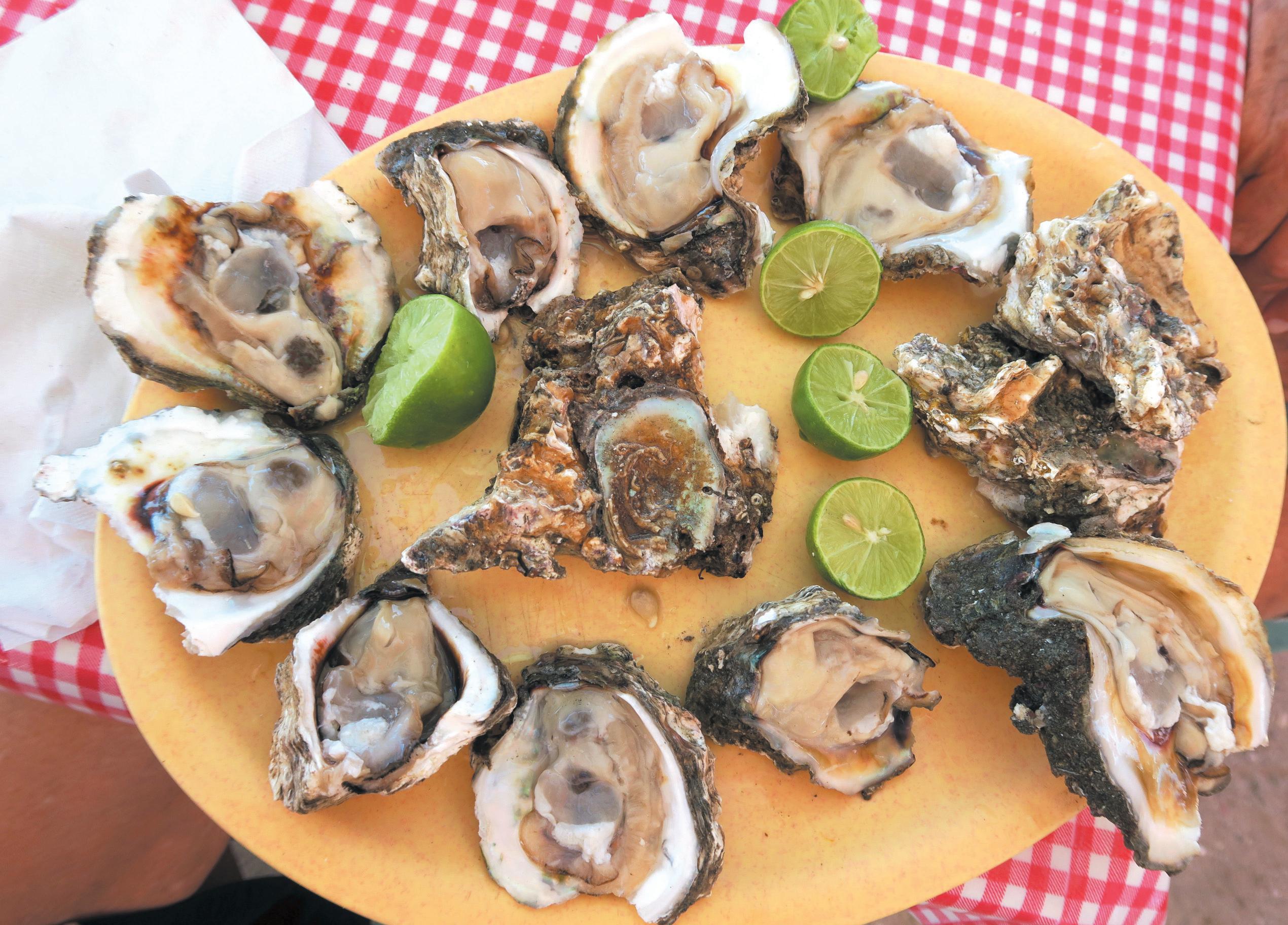
Facing the Plaza de la Republica, another palm-filled park with a Victorian filigree bandstand, we spied the twin yellow-tiled spires of the Cathedral Basilica of the Immaculate Conception
cultural revival. Named after the legendary operatic diva – who died of yellow fever in Mazatlan in 1883 – the building is home to a stunning 800-seat theater (with elaborate Italianate mezzanine and balconies) that offers classical and contemporary dances, symphony concerts, opera, jazz and more by performers from around the world. The complex also includes a municipal art centre, art galleries and fine-arts school.
We wandered most of the 20-block historical area near the theatre. Though much of the architecture we observed – including an impressive archaeological museum, history museum, and former shops and homes of wealthy merchants – dates from the 19th century, we also saw a number of intact Art Deco and mid-century buildings that add to the town’s visual appeal.
Facing the Plaza de la Republica, another palm-filled park with a Victorian filigree bandstand, we spied the twin yellow-tiled spires of the Cathedral Basilica of the Immaculate Conception. In addition to the expected soaring columns, gilded arches and sparkling chandeliers, the eclectic neoGothic basilica reveals a soaring interior with a surprising piece of history: each of its 28 stained-glass windows contains a Star of
David, commemorating a donation made by a wealthy local Jewish family in the late 19th century.
Beyond the cathedral, the central market beckoned. The bustling indoor bazaar offers phantasmagoric displays of local food. Counters were piled high with glistening fish – Spanish mackerel, sea bass, red snapper, snook – mounds of golden and red mangoes, bursts of red tomatoes, orbs of cheese and vendors selling only one product: tubs of spices, stacks of hot sauces, cases of coffee, chicken or beef cut every which way. Small eateries served casual fare (also found on the second floor) while other shops offered T-shirts, hats, beachwear and other touristy trinkets. ★★★
After our nearly three-hour walk, we were ready to retreat to the beach to body surf (him) and read (me). We hailed an openair pulmonia, the iconic little taxi (picture a golf cart with a roof for shade) created in Mazatlan in the 1960s. During our fiveday stay, we never needed to rent a car, not even to explore the remote and wild northern beach, Playa Bruja; pulmonias, as well as regular taxi cabs, are plentiful and inexpensive.
Serendipity played a part in our daily adventures. While enjoying a breakfast of eggs with tuna chorizo at our hotel, we marveled that such a thing as tuna chorizo even existed. Our waiter disappeared into the kitchen and returned with the label from the product – and directions on where in the Golden Zone to find Dolores Market, a modern, all-things-tuna emporium. (We traveled home with a dozen frozen packages.) By chatting with others along the way, we learned where to enjoy the best sunset cocktails (the roof terrace of the 11-storey Posada Freeman Best Western, where we first met Howard and Garrido); where to find a fabulous meal (Hector’s Bistro, a stylish and jazzy spot helmed by Mazatlan-born chef and owner Hector Peniche, touted as a catalyst for enticing other creative eateries to the Centro); and where to hear live jazz in Plaza Machado (La Bohemia).
Unsurprisingly, fresh seafood is a popular menu item in the Centro’s expanding number of chef-owned restaurants. Perhaps the best tip of all for two oyster aficionados was where to slurp fresh bivalves on the beach. A brief pulmonia ride brought us to Playa Los Pinos, a shallow wading beach popular with families with small children. Seated at plastic tables and chairs, shaded by umbrellas, we enjoyed two dozen freshly shucked Pacific oysters ($5 per dozen). The gnarly creatures, resembling prehistoric beasts, were sweet and perfectly complemented by the locally produced Pacifico beer. Nature and culture? In Mazatlan, we discovered we could have both.




UNBC Timberwolves midfielder Paige Payne and MacEwan Griffins goalkeeper Emily Burns both go after the ball on Friday night at Masich Place Stadium in the first game of a weekend Canada West women’s soccer doubleheader between the teams. Payne scored twice for the T-wolves but they fell 3-2 to the Griffins. Payne now has an impressive seven goals on the season but her team’s record slipped to 1-5-3. The Griffins, meanwhile, improved to 6-2-1. The rematch starts at 6 tonight at Masich. In men’s Canada West soccer, UNBC takes on Thompson Rivers University today and Sunday in Kamloops. In women’s exhibition basketball on Friday night, the Timberwolves defeated the Western Ontario Mustangs 74-64. The game was played in London, Ont.
Ted CLARKE Citizen staff
tclarke@pgcitizen.ca
The Vancouver Giants are finding ways to win simply because they’re making it difficult for opponents to score against them.
The Prince George Cougars, for two periods at least Friday night, were equally airtight.
All it took to upset the balance was a three-goal outburst in a four-minute stretch of the third period. That was all the offence the Giants needed to post their second consecutive shutout – a 3-0 victory over the Cats in front of 2,344 witnesses at CN Centre.
Owen Hardy got it going at 5:11, converting on a 3-on-1 break right after the Cougars had been denied on a 4-on-2 chance at the opposite end when Giant defenceman Ty Ettinger deflected a pass into the slot out of harm’s way while sliding on the ice.
Justin Sourdif added to the count on another odd-man rush at 7:24 when he got to his own deflection at the side of the net, beating Taylor Gauthier from a sharp angle. Then at 9:04, with the Giants on their second power play of the game, Lukas Svejkovsky ripped off a snap shot that beat Gauthier high to the blocker side just under the crossbar, the first of his WHL career for the 17-year-old native of Point Roberts, Wash.
Until that brief foray, it was anybody’s game.
Quality chances came at a premium in a scoreless first period that had very few stoppages of play. The Cougars carried the play in the second period and outshot the Giants 13-5. They held the puck in the offensive end for several extended stretches and forced goalie David Tendeck out of his comfort zone. For the Giants, it was a pivotal period holding the Cougars off the scoresheet.
Tyson Upper used his speed to get free with a left wing rush and Tendeck had to kick out his pad to keep the rookie winger from scoring the first of his WHL career. Josh Maser came close to notching his first of the season near the end of the

period, deflecting a point shot right on net.
The 19-year-old Houston native led the Cougars last season with 28 goals and he’s been working hard utilizing his six-foottwo, 207-pound bulk to create opportunities on a line with Ilijah Colina and Josh Curtis. But that line has struggled to find the net, accounting for just three goals and four points this season.
The Prince George power play has been a sore spot since the start of the season and they came into the game limping along at a 1-for-25 clip. Ranked 21st out of 22 teams with an abysmal four per cent success rate, they spent the week in practice trying to
work out the bugs but went without a goal or a real Grade-A chance on either of their two extra-man opportunities and are now 1-for-27.
The Giants (4-1-0-0) have won three straight and have allowed just nine goals in six games this season. They started their trip Wednesday with a 5-0 win over the Rockets in Kelowna. The Cougars (2-3-0-1) have lost their last two and have been held without a goal since the second period of last Saturday’s game against Kelowna.
The Cougars and Giants will play each other eight times this season. Game 2 goes tonight at 7.
LOOSE PUCKS: The Cougars named centre Ethan Browne as their player of the month for September. In five games the 17-year-old from Sherwood Park, Alta., scored two goals and had two assists for four points, which left him tied for the team lead with defenceman Ryan Schoettler. Browne joined the Cougars in January, coming over in a trade from the Everett Silvertips for forward Ethan O’Rourke. He played 30 games with the Cats in his rookie season and collected a goal and 10 assists. Browne was the starting centre Friday, playing on a line with Jackson Leppard and Vladislav Mikhalchuk.
Citizen staff
For the better part of three periods the Prince George Spruce Kings had the Victoria Grizzlies pinned down in defensive posture. They outplayed their opponent and nearly doubled the Grizzlies in shots, 4322, but Kurtis Chapman made all the difference for the visitors Friday night at Rolling Mix Concrete Arena.
The 20-year-old Victoria goalie stopped 40 of those 43 shots and the Grizzlies’ top-ranked NHL draft prospect, centre Alex Newhook, provided the margin of victory in a 4-3 decision, scoring the only goal of the third period. The teams were skating 4-on-4 when Riley Hughes took a shot from the slot that was blocked by goalie Logan Neaton but the rebound came out to Newhook, and the 17-year-old Boston College recruit had an
open net for his fourth goal and 13th point in 10 games this season
The win allowed Victoria (6-3-0-0) to keep pace with the Powell River Kings atop the B.C. Hockey League’s Island Division standings. The Spruce Kings (7-3-0-1) remained first in the Mainland Division. Victoria broke out to a 3-0 lead after 20 minutes on goals about three minutes apart from Hughes (power play), Charlie Campbell and Alexander Campbell. Spruce Kings
captain Ben Poisson scored shorthanded 1:44 into the second period and goals from Nick Poisson and defenceman Nick Bochen tied it up heading into the second intermission. The Spruce Kings have the rest of the weekend off. Their next game is on Thursday when they host Powell River, followed by a Saturday night encounter at RMCA against the Salmon Arm Silverbacks.

Ted CLARKE Citizen staff tclarke@pgcitizen.ca
They’ve waited two months for this, forced to rejig the schedule due to the wildfire situation in August.
All that smoke spoiled the show for barrel racers and team ropers who entered in the BC Northern Exhibition, but it’s game on this weekend.
They’ll be coming out of the woodwork from B.C. and Alberta to Exhibition Park with horses in tow, knowing local sponsors have kicked in some significant prize money. The barrel racers have a $6,000 added purse, over and above what they’ll raise through entry fees, while the team ropers will have $9,000 to add to the pot, which makes it the second-richest team roping event in B.C. this year.
“We had to cancel because the horses couldn’t breathe properly if they exercised in all that smoke so we put it off and decided to go for the gusto and have the final roping and barrel racing of the year with some added money in it,” said barrel racing draw organizer Nora Walach. “We planned it for this weekend and we couldn’t ask for better weather.”
It appears Mother Nature will cooperate, at least for today, with mostly sunny skies and a high of 12 C expected. Periods of rain and a high of 8 C are expected for Sunday, which might make the arena a bit slippery for Day 2 of the team roping.
The quickest barrel racer in the open class will likely leave the arena with a $1,000 cheque, not bad for 15 seconds of work. That’s not counting the hundreds of hours it takes to train a horse to run the barrels. The junior (16-andunder) and senior (55-and-over) age categories will each have $250 added to the purse, while the three peewees (11-and-under) entered will have $100 added.
One to watch is four-year-old peewee racer Paisley Schick, who started racing barrels when she was three.
“She’s just so tiny and she sparkles when she rides,” said

part of the BC Northern Exhibition.
Wallach. “There’s tons of kids and they come to penning events all the time during the winter and they do big ropings in the winter also.”
For this event only, anybody can enter the open regardless of their age, so some of the younger riders will enter two classes. The open class has 72 entries and the four quickest will receive payouts. Wallach said the pros who plan their calendar around events like the BCNE won’t be here this weekend but there will still be plenty of talented riders in the field.
Chelsea Wallach, Samantha Wilton and Codi Malton, all of Prince George, are among the entries in the open class. Malton is also in the junior competition and could push seasoned competitors Fallon Jones and Nevada Jones for the title. Local riders Bailey Larson, Wynter Payjack, Katie Hall, Lyndsay Houchin and Lainy Proctor are also competing as juniors.
The dirt at Exhibition Park is pristine and should provide superb footing for the animals. New ground was trucked in this year and the organizers spent time Friday picking up rocks in the alleyway that leads to the arena to make the ground even more
(AP) — Kawhi Leonard’s debut in his new home arena will have to wait. Leonard was one of the regulars who rested Friday night, when the Toronto Raptors defeated Melbourne United 120-82. The Raptors scheduled five preseason games this season, but Friday’s was the only one that’ll be played
conducive to fast times.
The one-day barrel racing event starts at 10 a.m. today and will wrap up around noon, followed immediately by the team ropers, who will be on for about four hours. Sunday’s roping runs from 10 a.m. to about 3 p.m.
Carl Hyde, who stuck his hand up to take on the team roping organizing duties, will also compete this weekend. He’s got a ringer for a partner in the open event –his son-in-law Murdock Keith of Clyde, Alta., a two-time qualifier for the Canadian Finals Rodeo. Keith will be roping the head and Hyde will be chasing after the heels. Hyde will also be heeling with his 12-year-old granddaughter, Nevada Keith, who will be roping heads in Sunday’s competition. Each roper can enter as a member of as many as four teams, with 100 teams expected in the open division today. To try to even the competition, each roper is assigned a number according to ability (1-9 for headers, 1-10 for heelers) and that handicap system will come into effect Sunday in the Number 11 team roping competition. In that event, the combined ratings of the two riders cannot exceed 11. Hyde is expecting as many as 200 entries in that.
in Toronto. Kyle Lowry also got the night off for the Raptors, who don’t play again in Toronto until the season-opener Oct. 17 against Cleveland.
Melbourne stayed with Toronto for much of the first half. After 18 minutes, Toronto’s lead was 34-31. Over the

The open event will have $4,000 added to the purse, while the No. 11 event has $5,000 added.
“We’ve got a bunch of ropers coming from Alberta and a bunch coming from Dawson Creek, Fort St. John, Merritt, Kamloops, Ashcroft and Cache Creek,” said Hyde.
“There’s going to be some pretty high-profile ropers here, some pretty handy guys.”
The livestock is making the trek from Quesnel and there should be plenty to choose from for the ropers with 70 head of Longhorn cows available to be sent out of the chutes.
Hyde said there’s renewed interest in the Prince George Rodeo Association team roping club, which he said should boost participation in their winter practice sessions and competitions at the Livestock Arena. Newcomers to the sport can practice their roping skills with a Heel-O-Matic roping dummy, which resembles a cow with horns that kicks up its heels as it follows a predictable path in the arena.
“We’ve had a lot off success with it in the last two years,” said Hyde. Hyde said Murdock Keith will be coming back to Prince George in November to teach a roping school.
next 18 minutes, the Raptors outscored their Australian guests 67-27 and took a 101-58 lead into the fourth quarter. Norman Powell led the winners with 21 points, and Pascal Siakam added 19. Casper Ware and Chris Goulding led Melbourne with 17 points apiece.
SEATTLE — Kevin Durant got off the bus inside the loading dock of KeyArena about two hours before tip-off and made a quick glance toward the court, visible through the tunnel.
He was back where his NBA career began more than a decade ago.
“Definitely a different feeling pulling up into the arena and down into the ramp just like when I used to play here,” Durant said. “Bringing back memories.”
Durant was back in Seattle on Friday night along with his Golden State Warriors for a preseason game against the Sacramento Kings for the first NBA game in the city since the SuperSonics left for Oklahoma City following the 2007-08 season. It was an opportunity for the Seattle basketball community to gather once more before KeyArena becomes a construction site later this fall as part of a $700 million renovation that is expected to land the city an expansion NHL team.
But on this night it was again an NBA building with the same energy, excitement and noise that bounced off its walls in the heyday of the Sonics, when they were among the NBA’s elite franchises. The game sold out in a matter of hours and the lower bowl was crammed with fans more than an hour before tip-off.
And all the focus was on Durant, who along with Jeff Green are the only players remaining in the league who played for the Sonics in Seattle. When he was introduced as the last member of the starting lineup for Golden State, Durant pulled off his warmup revealing a Shawn Kemp SuperSonics jersey from the 1996 season, the last time Seattle made the NBA Finals. The crowd erupted, as if Durant needed to be any more beloved in the Emerald City. Durant also took the microphone before tip-off to relay a message to the fans.
“I know it’s been a rough 10 years,” he said. “NBA is back in Seattle for tonight. Hopefully it’s back forever soon.” Golden State beat the Kings in a romp, 122-94.
Patrick JOHNSTON Vancouver Sun
Antoine Roussel, the winger signed as a free agent in the off-season by the Vancouver Canucks, is inching closer to making his 2018-19 season debut.
After sustaining a concussion in a collision during an informal skate in Montreal, weeks before training camp, Roussel finally skated with his new Canucks teammates on Friday.
He had previously only skated on his own; he also took about a week off from skating due to ongoing symptoms from his concussion.
But his work to come back from the brain injury has ramped up this week and he was involved in shooting on the Canucks’ goalies earlier this week. On Monday, general manager Jim Benning said Roussel was scheduled to visit a doctor on Wednesday and if all went well at the medical assessment, the team hoped he would be able to
join the Canucks for practice.
On Friday, he did.
“He’s cleared to practice, so we’ll do that and see how he feels,” Canucks coach Travis Green said afterwards.
He is also now expected to travel with his new team on their upcoming six-game road trip, which begins tonight in Calgary.
Roussel is currently on injured reserve; to activate him and place him on the main roster, the Canucks will have to make another roster move. Only Elias Pettersson and Brock Boeser are exempt from waivers, any other player the Canucks would like to demote to the American Hockey League will have to be placed on waivers first.
Roussel made his reputation as an agitating winger for the Dallas Stars but was actually a Canucks minor leaguer, skating with the Chicago Wolves, the team’s AHL affiliate, in 2011-12. He also played for the Canucks prospects team at the 2011 Young Stars Classic.
Citizen news service
COLUMBUS, Ohio — When the week began, Curtis McElhinney didn’t expect to be starting an NHL game Friday night, let alone emerge as the winning goalie in a game in Columbus, where he played as a backup for five seasons.
The 35-year-old McElhinney was waived by Toronto on Monday and scooped up by Carolina on Tuesday as a backup after starter Scott Darling was injured over the weekend. He started in the second leg of a back-to-back on Friday night, stopping 31 shots as the Hurricanes beat the Blue Jackets 3-1.
McElhinney was the primary backup to Sergei Bobrovsky in Columbus from 201317. Playing for the Maple Leafs last season, he lost to the Blue Jackets on three separate occasions.
“It’s a nice way to get a win,” he said. “I think they got the best of me when I was playing against them on Toronto, so it’s nice to come out here and make a good first impression with the club.” Sebastian Aho and Micheal Ferland each had a goal and an assist, and Jordan Martinook also scored to help give Carolina coach Rod Brind’Amour his first NHL win and ruin the home opener for the Blue Jackets.
McElhinney grabbed the puck after the final horn and handed it over to the rookie coach.
“He deserved it a lot more than I did,” said Brind’Amour, a former Carolina player who’s been an assistant coach for the past seven seasons. “I stood back there and yelled, and he was making all the saves. It was great that we were able to get him and he contributes like that.” Columbus looked discombobulated at times against Carolina’s tough neutral-zone defence but made an aggressive push in the second period, only to have shot after shot turned away by McElhinney.
Brandon Dubinsky scored and Sergei Bobrovsky stopped 32 shots for the Jackets. Martinook got it started 1:43 into the game when he rifled a shot over Bobrovsky’s glove from the slot off a nice feed from 18-year-old Andrei Svechnikov, the No. 2 pick in the June draft who picked up his first NHL point with the assist. Dubinsky tied it later in the first when he tipped in a rebound off McElhinney’s skate. Aho chipped a shot up over Bobrovsky to give the Hurricanes a 2-1 lead 6 1/2 minutes into the second period. Later in the second, McElhinney made a critical save, swallowing up a point-blank shot from Josh Anderson on a breakaway.
The Associated Press
BOSTON — Chris Sale struck out eight for his first post-season win, J.D. Martinez hit a three-run homer and the Boston Red Sox sweated out their shaky bullpen to hold off the New York Yankees 5-4 on Friday night in Game 1 of the AL Division Series.
One year after he was pounded by Houston in his playoff debut, Sale took a four-hit shutout into the sixth inning. The Yankees loaded the bases in the sixth and seventh, cutting the deficit to 5-3. Aaron Judge homered off Craig Kimbrel leading off the ninth before the Red Sox closer retired the next three batters, striking out Giancarlo Stanton and Luke Voit for the save.
Game 2 in the best-of-five series is tonight, with Boston starting another pitcher trying to overcome a history of post-season struggles: left-hander David Price is 0-8 as a starter in the playoffs. He’ll face Yankees righty Masahiro Tanaka.
In the first playoff matchup between the longtime rivals since 2004, the 108-win Red Sox took a 5-0 lead against Yankees starter J.A. Happ and then white-knuckled it after Sale left with two on and one out in the sixth.
New York, which won 100 regular-season games plus the AL wildcard game against Oakland, got three singles and two walks in the sixth, scoring two before Brandon Workman – the only player on the Red Sox roster with a World Series ring – struck out Gleyber Torres to end the threat.
The Yankees loaded the bases with nobody out in the seventh but scored just one run. Boston manager Alex Cora used scheduled Game 3 starter Rick Porcello to get two outs in the eighth before turning to Kimbrel for a four-out save. It was the first ALDS matchup between the teams and the first in the post-season since the Red Sox staged an unprecedented rally from

a 3-0 deficit in the 2004 AL Championship Series to advance and then won the World Series to end their 86-year dynasty of disappointment.
“This is what I envisioned,” said J.D. Martinez, who signed with the Red Sox as a free agent last offseason. “I think this is what MLB and baseball wanted to see, what baseball fans all over the world wanted to see.”
Boston fans were ready, with derisive chants for the Yankees during introductions and again after Martinez smacked a 2-0 fastball into the glove of a stem cell researcher in the front row of the seats above the Green Monster.
The Red Sox made it 5-0 in the third when Mookie Betts doubled off the left-field wall and Andrew Benintendi chased Happ with a
bunt single that moved the runner to third. Steve Pearce singled in one run and another scored on Xander Bogaerts’ sacrifice fly. Sale left with a 5-0 lead after giving up singles to Judge and Stanton in the sixth; both came around to score. In all, Sale was charged with two runs on five hits and two walks in 5 1/3 innings – the longest playoff outing for a Red Sox starter since 2013. Martinez and Benintendi had two hits for Boston. Judge had three and Voit two for New York.
HOUSTON (AP) — George Springer and the Houston Astros
Citizen news service
SURREY – When DeVier Posey hits the field tonight, he’s going to be focused on keeping his emotions in check and playing football.
The B.C. Lions wide receiver wants to bounce back from a tough loss, but Saturday will also be the first time Posey lines up against his former teammates on the Toronto Argonauts.
“I just kind of want to stay locked in, stay mentally prepared,” the MVP of last year’s Grey Cup said after practice on Friday. After winning the championship with Toronto, Posey signed with the Baltimore Ravens.
He joined the Lions last month after being released by the NFL club and has since tallied 11 receptions for 111 yards in three games, including last week’s blowout loss in Hamilton.
The Lions (6-7), last in the West Division but just two points back of Winnipeg and Edmonton, have spent all week atoning in practice for the 40-10 loss, Posey said.
“We just feel like last week a lot of those things slipped and that’s why the score got out of control,” he said, adding that players have been more focused in training in recent days.
“It’s just the idea of taking each rep as if it’s your last, working on the small details and things.”
Sometimes athletes need a tough result to “zap you into reality,” said Lions quarterback Jonathon Jennings.
“You need to slap yourself in the face a little bit to get back to being focused and the team that we were before,” he said. Jennings threw for 146 yards

and three interceptions in the loss to the Ticats.
Lions head coach Wally Buono said indecision and doubt impacted the 26-year-old’s performance.
“At the quarterback position, where you’re talking about fractions of seconds, that can get up on you real fast,” he said, noting that many on his team were unhappy with how they played.
“When you look at the Hamilton game, I’m not really sure that any-
picked up right where they left off last post-season, hitting four home runs to power past Cleveland 7-2 Friday in Game 1 of the AL Division Series. Alex Bregman, Jose Altuve and Martin Maldonado also connected for the Astros, who hit a World Series-record 15 homers last year in winning their first championship. Much was made about the pitching prowess these teams possess in the days leading up to this game. But it was a bunch of longballs to put the Astros ahead in this bestof-five series.
Houston’s pop backed up a solid start by Justin Verlander, who bested Corey Kluber in a matchup of Cy Young Award-winning aces in the first post-season meeting between these teams. Verlander took
one was proud of their work, their effort. This is a different week, this is a different opportunity.”
Both B.C. and Toronto (3-10) are coming off losses, but the Lions went 3-1 in September, while the Argos have now lost five in a row.
They may be on a losing skid, but the Argos will still come into tonight’s game ready to fight, Jennings said.
“They’re a professional team,” he said. “They’re going to come out to play for their pride and play for their jobs. And we’re going to have to make sure that we’re strapped down, that we’re saddled up and ready to go because any team in this league can beat any team. And we’re not taking it for granted.”
After Argos got trampled 38-16 by the Stampeders last Saturday, the club’s top brass opted to keep the squad in Calgary for the week.
a no-hitter into the sixth inning and allowed two hits and two runs in 5 1/3 innings for his 12th career playoff win.
Kluber, a two-time Cy Young winner who was coming off his first 20-win season, was tagged for three home runs in 4 2/3 innings. Game 2 is today in Houston.
LOS ANGELES (AP) — Clayton Kershaw tossed eight innings of two-hit ball in the Dodgers’ second straight playoff shutout, and Manny Machado slugged a two-run homer as Los Angeles beat the Atlanta Braves 3-0 on Friday night for a 2-0 lead in their NL Division Series.
The Dodgers used a nearly identical formula to win 6-0 in Game 1 behind Hyun-Jin Ryu, who allowed only four two-out singles over seven innings, and home runs by Joc Pederson, Max Muncy and Enrique Hernandez.
Kershaw was even better. The left-hander struck out three and walked none in remaining unbeaten against Atlanta throughout his illustrious career.
Los Angeles can sweep the bestof-five series in Game 3 on Sunday in Atlanta.
MILWAUKEE (AP) — Jhoulys Chacin and the Milwaukee bullpen kept in control, Mike Moustakas contributed two more big hits and the Brewers beat the Colorado Rockies 4-0 on Friday for a commanding 2-0 lead in their NL Division Series.
The Brewers won their 10th straight game going back to their impressive finish to the regular season. Game 3 is Sunday at Coors Field. Another win, and Milwaukee is into the NL Championship Series for the first time since its previous post-season appearance in 2011.
Argos coach Marc Trestman said the Lions have plenty of weapons at their disposal.
“Offensively they are a loaded football team,” Trestman said in Vancouver Friday.
“Jennings is an explosive passer. Defensively they are so multiple. We all know pass-rush wise they are as good as anybody in the league.”
Toronto essentially needs to run the table the rest of the season to keep their slim playoff hopes alive. Quarterback McLeod BethelThompson admits this season has been a tough one, but said he still has hope.
“It’s execution. We are worried about what we have to do,” he said. “When it all comes together its going to be amazing. It’s going to be a fun time. We are very close to where we want to be.”
10:39, Third Period
1. Vancouver, Hardy 2 (Malm) 5:11 2. Vancouver, Soudif 2 (Roman, Watts) 7:24 3. Vancouver, Svejkovsky 1, 9:04 (pp) Penalties – Rhinehart PG (cross-checking) 7:56, Hardy VAN (unsportsmanlike conduct), Kryski PG (holding), Mikhalchuk PG (unsportsmanlike conduct) 11:20, Bulych VAN (roughing), Perepeluk PG (charging major, game misconduct) 15:57. Shots on goal by Vancouver 10 5 10 -25 Prince George 5 13 6 -24 Goal – Vancouver, Tendeck (W,4-1-0-0); Prince George, Gauthier (L, 2-3-0-1) Power plays – VAN: 1-4; PG: 0-2. Referees – Kyle Kowalski, Colin Watt; Linesmen Nick Albinati, Anthony Maletta. Attendance – 2,344. Scratches – Vancouver: D Bailey Dhaliwal (upper body, one month), RW Tyler Ho (healthy),
Andrew Lincoln will no longer evade the arc of a knife, a bullet or a bloody baseball bat wrapped with razor wire on the Georgia set where AMC’s The Walking Dead is filmed.
The show’s upcoming ninth season, which premieres Sunday night, will be the last for his character, sheriff’s Deputy Rick Grimes, and Lincoln has wrapped his last scene.
Now he’s hoping to direct an episode of the show, so he’s “shadowing” one of the directors during filming near the small town of Senoia.
“I’ve always had a fascination with the language of film,” he told
The Associated Press in a recent interview. “And I’m a control freak. I have strong opinions esthetically, and maybe it’s time for me to own up to it and see if I can, you know, put my money where my mouth is.”
His trademark humour finds its way into many of his answers to questions about his future.
“You’re interrupting my shadowing!” he says. “There’s lessons being taught out there right now and I’m not there. Which way to point the camera is probably being taught at the moment.”
The drama sometimes follows the story lines of a comic book series that debuted in 2003, but also veers from that narrative to create

new tales.
It’s built around a cast of characters struggling to survive in a world that’s fallen into chaos and become infested with zombies they call “walkers.”
The humans also break into factions and sometimes wage war with one another.
As the show enters its final season with Lincoln’s character, he speaks lovingly of the “lessis-more” aspect of the upcoming season.
“There’s less gas, there’s less guns, there’s less food,” he says. “But we’ve got more tension as a result, and thrills and spills. If something goes wrong in this landscape that we inhabit now, then we’re in serious trouble.”
Lincoln says The Walking Dead has always been an ensemble show that’s not dependent on any one character.
“The themes this season are absolutely what we set out to achieve in the first season,” he said. “It’s a story of hope, family and friendship. People with nothing in common realizing that they have everything in common.”
AMC President Charlie Collier said “what started as the Rick Grimes story really became a story about a group of people helping each other survive and having each other’s backs in the worst of conditions.”
Collier recalled when Lincoln’s character rode on horseback into a destroyed and deserted Atlanta and then waged war on the downtown streets.
As Lincoln prepared to film his final episodes, he said he felt like he was watching a cruise ship

slowly pulling away from him.
“On this cruise ship, there are the lights and the dancing and I can hear the clink of the glasses, but I’m sort of bobbing around in the shallows of the sea as it drifts

away, you know, it continues and it continues in an amazing fashion.”
Much of the show is filmed in Senoia, a small town 35 miles southwest of Atlanta. It has helped fuel the film industry in Georgia, which has boomed in the past decade.
“Atlanta was not a place I knew,” Lincoln said, “and over the last decade it’s become the new hub of the industry.”
He had always envisioned coming to the United States from his native England “as a sort of gateway to literally trying to raise my profile so I could keep working in America.”
“It kind of worked,” he says. “It went beyond anybody’s expectations – this show and the success of this show – it was always with a future to working here.”
Lincoln lives in an Atlanta suburb, where the stories about him include one from a Halloween evening, where he ran into a foreign exchange student dressed in a zombie costume.
He was wearing a mask so the boy, who was by himself, didn’t recognize him.
“Then I took my mask off, and he absolutely freaked out,” Lincoln said. “He was just a sweet kid, and we just thought, ‘Well, what are you doing, come with us.”’
The story has parallels to the show, where the characters often collect stragglers in forests or along country roads.
That’s what Collier says will continue to drive the show after Lincoln’s character disappears: The story of a group of people trying to survive.
“You’ll see others rise,” he says. “There’s just so much more story to tell.”





Michelle Williams can’t believe it’s been less than a year since “the pay stuff.” Time has seemingly accelerated since last October when, while shooting the comic book movie Venom, the unimaginable began to happen: Titans of her industry started to fall under #MeToo. Then months later, after reshoots for All the Money in the World, which were hurriedly completed to remove scenes featuring one of the accused, Kevin Spacey, Williams became the centre of a very public controversy over a vast pay discrepancy between herself and her co-star Mark Wahlberg. She was paid less than $1,000. He got $1.5 million.
It’s also a year in which she married musician Phil Elverum, and started making some atypical career choices for a four-time Oscar nominee who has in her adulthood always veered toward art house films of directors like Kelly Reichardt and away from the commercial, from big budgets and from comic book films like the one she’s currently promoting.
During a promotional day for her latest film, Venom, Williams cranes her neck performativity to look at the somewhat grotesque poster behind her, half of which is star Tom Hardy’s face, and the other half is the tar-like people-eating alien “symbiote” that he becomes. “Nope,” she says. “Doesn’t seem like me!”
But Williams is finding that she’s ready to take some chances and to bet on herself.
“I’m recognizing my own strength and my own worth,” she said. “I’m 38 and it’s just happening.”
Plus she wanted to work with Hardy.
“She’s one of the best actors out there working today,” said Venom director Ruben Fleischer. He worried that she wouldn’t want to do it, but Williams said she was only flattered by the offer.
“It’s not like people are always asking me to be in these kinds of movies,” Williams said. “I thought it would be fun to try something on a larger scale and to see if I can relax.”
Venom is a character in the Spider-Man comics, and the $100 million film, out Friday, is a part of Sony Pictures’ efforts to create an extended SpiderMan Universe with the Marvel characters they license. (Spidey does not appear in Venom.)
Williams plays Anne Weying, the ex-fiance of Hardy’s Eddie Brock. She was able to make the character her own, from the business-like costumes (some of which she shopped for herself) down to the dialogue.
“There were certain lines that I felt were too passive or sweet. I wanted to make sure that she could stand her ground,” Williams said, citing the Howard Hawks classic His Girl Friday as inspiration for the equal dynamic she wanted to convey. “I wanted it to be unmistakable that it was made in a #MeToo era. I said, ‘I know that you guys won’t let me wear a #MeToo t-shirt, but that’s the vibe that I want.”’ The #MeToo moment, and the pay debacle has made Williams reflect on her career and experiences up to this point and what it might mean for her 12-year-old daughter, Matilda Ledger.
“It was really tough when I was younger. You do get put in these situations with all of these men. You’re always talking to men, being photographed by men. And I didn’t know that I had another choice. I didn’t know that I could say no. I didn’t know I could say stop. I just didn’t grow up with any of that language. And I never thought that it would change. I just thought that I would have to teach my daughter the language,” Williams said. “Now, in America, I feel like our daughters are going to grow up with a different understanding of what’s possible, what they’re entitled to. My daughter knows that she can say whatever she wants. But I didn’t.”
And her life has changed dramatically in the past year, although at first it didn’t seem like it would. It took over six weeks for the pay discrepancy story to take off after breaking in The Washington Post in late November.
“When that story came out no one called me. Not a single person was like, ‘Oh bummer for you.’ Not a single person. It reinforced this mentality that nobody cares and you’re completely alone out there,” Williams said.
It would take the one-two punch of a tweet from her friend Jessica Chastain and a USA Today piece during the Golden Globe Awards in January for the story to hit a cultural nerve that would result in Wahlberg donating his $1.5 million fee to Time’s Up. Their shared talent agency, William Morris Endeavor, added $500,000.
“For me the hero of that story is Chastain,” Williams said. “I owe her so much.” She hopes that her public struggle has helped embolden other women outside of the entertainment industry. Williams is now earning equal pay on a project for the first time in her life, for the FX Bob Fosse series, and with films like Venom, is “opening up” her definition of herself.
She’s also giving herself a break, too.
“I would be happiest probably making Kelly Reichardt films for the rest of my life. It’s really where my heart is,” she said. “But I live in New York City and I have kids going to private school and I have other considerations as I get older and I just think, well, what if there is more for me?”


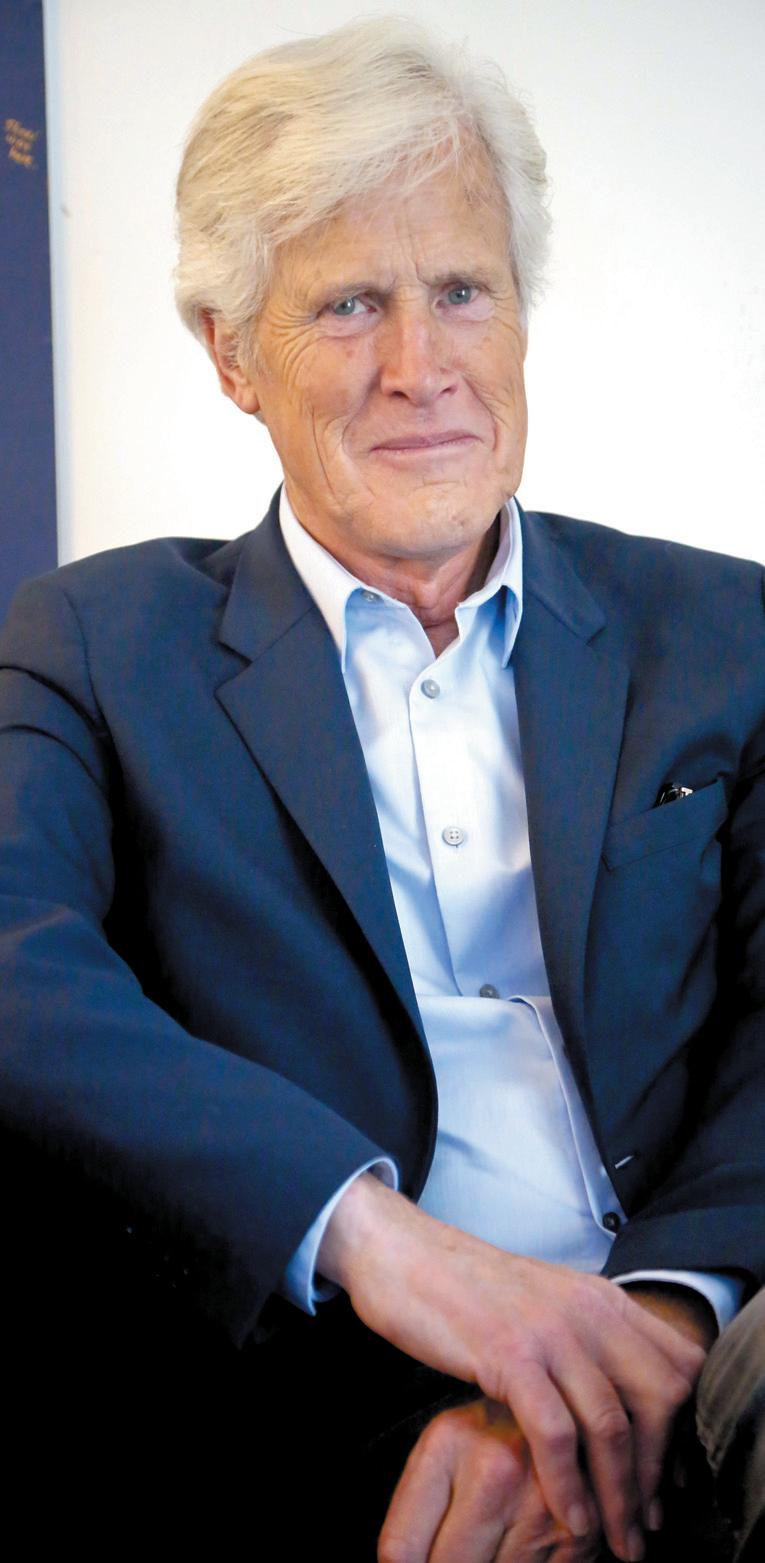
Keith Morrison, the Dateline correspondent, has spoken to countless murder suspects and grieving family members over the years.
But he says he truthfully never had an appetite for covering crime.
“I had to be dragged into it. I resisted,” he said recently. “I think I felt like it was an invasion of people’s privacy.”
Morrison, who says he fell into television after working in radio because he was “pretty much a screw-up at everything else,” discovered over time that it could actually be therapeutic for the victims’ families to speak with him.
“They want to talk about their loved ones, they want to talk about what happened. They want justice.”
If people want to tell their stories, there’s an audience who wants to listen.
Netflix’s Making a Murderer and podcasts like Dr. Death and Serial show true crime has never been hotter, but Dateline has been in the game for nearly three decades and is still going strong.
Now in its 27th season and airing Fridays and Saturdays on NBC, it’s the longest-running primetime show on the network. It’s also the highest-rated news magazine show on Fridays.
One fan, Amanda Michelson of Cincinnati, jokes her dedication to the show is “an obsession.” She says she has nightmares about the show sometimes but “can’t get enough.”
Michelson is especially pleased when she sits down to watch an episode and learns Morrison is assigned to the story. “When I hear his voice, I know it’s going to be a good one,” she says.
NBC has taken advantage of the popularity of Dateline.
There are Dateline socks for sale and even free voicemails available for download on Sound Cloud featuring Morrison and fellow correspondent Josh Mankiewicz.
In one voicemail option, Morrison says, “No one can get to the phone. Troubling, really. Just leave a message and someone will get back to you. Or will they?”
There’s also lighter Morrison fare that has been made available, like a video of him reading Rudolph the Red Nosed Reindeer. In another, he reads the phonebook and somehow makes that sound ominous.
Morrison, Mankiewicz, Andrea Canning and Dennis Murphy are all so popular, this year they were an attraction at CrimeCon, an annual convention for fans of true crime.
Working on Dateline also allows Morrison to explore long-form journalism. Episodes can be one or two hours long.
“Every story in life is really complicated and takes time to sort out and it’s nice to be able to do that.”
It’s “an ambition” to go even longer, he said.
“Just the other day I was bugging the boss, saying we’ve got to have a six episode series on a particular story I’m working on.”
Interviewing accused murderers doesn’t bother him either.
“I’m happy to be anybody’s confessor, it doesn’t bother me... They’re trying to impress you. The most vicious of murderers wants to show he’s really a nice guy. He’s misunderstood and everybody got it wrong,” he said.
So as people tune into Dateline as escapism from their own lives, what kind of entertainment does he like?
“You might be surprised to know I like murder mysteries. Just not true ones,” he said.
He’s in the middle of reading the French mystery series known as the Maigret Mysteries. There are 75 books that have been translated to English.
“The writing is extraordinary and they’re fun to read.”
Morrison was born in Lloydminster, Alta., and was known to national news viewers in Canada during his reporting days with the CBC and host duties on CTV’s Canada AM, before going to NBC.
He is the guest speaker at this year’s Jack Webster Awards in Vancouver on Oct. 29.
Citizen news service
It was the day of the birthday party, and the husband and wife had invited everyone they knew. They’d spent the morning buying food – a sheet cake, jumbo hot dogs, ground beef, soda, chips –and were now standing around a picnic table covered with it all, along a long lake under a cloudless sky, hoping at least some people would show up to eat it.
Today was the first time both sides of their family were supposed to come together, something that hadn’t happened at their wedding four months before. On that day, not a single member of the husband’s family had attended – not his brothers, who’d called him a fool for marrying like this, and not his parents, who’d told him the relationship would only get him into trouble.
Just about the only people who’d gone that day, and were here so far on this day, had been the people involved in the wedding itself.
There was Maria Vargas, a shy and brooding girl who looked older than her 16 years, and her husband, Phil Manning, 25, who often acted younger than his. And nearby, smoking a cigarette, was a slight woman with long, narrow features, Michelle Hockenberry, 39, the mother who’d allowed her daughter to marry.
Even in an era when the median age of marrying has climbed higher and higher, unions like Phil and Maria’s remain surprisingly prevalent in the United States. Between 2000 and 2010, an estimated 248,000 children were married, most of whom were girls, some as young as 12, wedding men.
Now, under pressure from advocates and amid a nationwide reckoning over gender equality and sexual misconduct, states have begun ending exceptions that have allowed marriages for people younger than 18, the minimum age in most states. Texas last year banned it, except for emancipated minors.
Kentucky outlawed it, except for 17-year-olds with parental and judicial approval. Maryland considered increasing the minimum marrying age from 15, but its bill failed to pass in April.
Then in May, Delaware abolished the practice under every circumstance, and New Jersey did the same in June. Pennsylvania, which may vote to eliminate all loopholes this autumn, could be next.
“Devastating” is how the bill’s memorandum summarized the consequences of child marriage. Nearly 70 per cent of the unions end in divorce, research suggests, and for children in their midteens, it’s higher still – about 80 per cent.
Teen brides are nearly three times as likely to have at least five children. Their chance of living in poverty is 31 per cent higher. And they’re 50 per cent more likely to drop out of school, which was the outcome that terrified Maria the most.
The start of the school year was just two weeks away, and she still didn’t know whether her mounting responsibilities at home would keep her from returning to the classroom.
This is how a child in America gets married:
It was a Friday, March 16. Maria woke early. She normally hated anything feminine – “a tomboy,” Michelle called her, who smoked, swore every few words, had skull tattoos – but today was different. She wanted it all. Michelle did her makeup and hair. Maria put on a white dress and veil.
Then, fearing authorities would arrest Phil at the local courthouse,

they drove into nearby West Virginia, where they wouldn’t be recognized and which has one of the country’s highest rates of child marriage.
Within an hour of arriving at the Morgan County Courthouse, her mother had signed the form, the marriage license had been issued, an officiant at the ceremony outside had said, “It’s my pleasure to be the first to introduce Mr. and Mrs. Philip Manning,” and everyone had begun to cheer. Maria felt happier than she’d ever thought possible.
Now it was nearly five months later. She was waking once more, this time past 10 a.m., feeling exhausted again.
She poured a bowl of Cocoa Puffs for Douglas’ breakfast, then looked at the mess around her.
She swept the floor. Scrubbed the counters. Pulled out a bag of garbage from the trash bin. Put in a load of laundry. Lit a scented candle. And checked on Douglas.
“I got to clean your room next,” she told him, sighing.
Maria was a housewife, in every sense.
In this trailer at the edge of town, which she rarely left and which she and Phil shared with an unemployed friend, she cooked most meals, swept floors, dispensed advice and managed finances.
Every month, Phil took home $1,600 from a furnace of a factory making drill bits, and every month, they spent about $1,150 of it on bills.
To keep them disciplined, she’d stuck a budget to the refrigerator.
“Monthly savings: $450,” it said. The sum seemed more hopeful than realistic, but it was what they had to save if they were ever going to get the money they needed to move to nearby Bedford, where she hoped to enroll at a high school that had on-campus child care for Douglas.
The possibility of going to school was the only remaining shard of a childhood that had long since splintered apart.
She remembered the moments.
She was four, hugging her handcuffed mother, while Michelle was incarcerated for simple assault.
She was 13, caring for her younger siblings, day after day, as Michelle watched her stepfather die of non-Hodgkin’s lymphoma at the hospital.
She was 14, hanging out with a 19-year-old man who, according to police reports filed in the subsequent criminal cases, had sex with her at least five times at the Janey Lynn Motel in Bedford, got her pregnant, became her boyfriend

and then later abducted her.
After Douglas was born, and after the father had gone to prison for the concealment and corruption of a minor, school seemed to matter less.
Michelle told her she’d look after Douglas. But Maria couldn’t bring herself to trust him with anyone, not even her mother, and didn’t return to the classroom that year.
One of the first people, in fact, she allowed to care for Douglas was Phil, whom she’d met at a friend’s place when she was 15 and with whom she’d at first wanted only a physical relationship.
But soon she couldn’t imagine being with anyone else, and still couldn’t.
Phil met Maria on Feb. 25, 2017, in a trailer on the other side of Everett, where a buddy from jail was living. He loved her hair, long and black, and all that night, she laughed and took pictures of him with her phone. Phil leaning back, giving her a weird face. Phil closing his eyes, drinking a beer. Phil smiling in a selfie, bare shoulder pressing against hers.
To him, she sure didn’t look 15, but he never asked.
What he did ask for was her phone number. “I’d caught feelings” was how he put it, and that was that. He was 24, and he had a 15-year-old girlfriend.
What at first felt innocuous soon became a terrible secret. They saw each other as often as they could but lived according to certain rules.
Never hold hands in public.
Never kiss unless they were alone.
Never tell anyone anything, least of all the truth – that they were already sleeping together, that they weren’t just friends.
He thought about breaking up with Maria all of the time, and about how it could end if he didn’t. With him in jail. With his face on the Pennsylvania sex offender registry. With his life ruined.
But instead he moved into her mother’s house, started calling Maria “wifey” and concocted another cover story. He was living there to help care for her mentally disabled brother, Donte, and nothing more.
All of the lies, one after another. It got to be too much, especially after he’d come to see her son as his own, and especially after he’d ask her to marry that October, and she’d said yes.
So he stopped hiding it.
He changed his Facebook picture to one of him and Douglas. He called Maria his girlfriend online.
He started telling people. His parents were furious: “You shouldn’t be doing this; she’s 16 years old,” his father said.
Phil tried to explain it to people. In many ways, she was more mature than he was. She’d already raised siblings and was now a parent, and a good one at that, which was more than he could say for himself.
He’d rarely spoken to his daughter, 8, whom he’d had with a woman outside Erie, where he was raised, but Maria had gotten him to change that. Maria was an example to work toward, and something to work for, which had now become a means of absolution.
He looked at their wedding photos on the bookcase against the wall.
“It felt right,” he said, sitting down. “There was a special connection.”
“You pedophile,” Maria said, just joking, but he winced. “Thanks, babe,” he said. Then she said something else that hurt even worse:
“I don’t know, I don’t even think I should have gotten married with how young I am.”
“Do you think it was a mistake?” he asked softly.
“No,” she said, trying to backtrack. “Baby, you take things too personal.”
Days before the start of the school year, the trailer was quiet except for the murmur of the television and the running of the faucet as Maria washed dishes, worrying.
She thought about the car the family didn’t have, and how Phil needed to bum a ride every day to work.
She thought about the new phone he needed.
The replacement she’d bought off a guy on Facebook for $230 the day before had wound up being broken, and now they were out the money and he still didn’t have a phone.
She finished with the dishes, then looked at the black kitchen rug, covered in crumbs and dirt again.
“Do you know what we really need right now?” she asked when Phil emerged from the bedroom past 11 a.m. “A vacuum.”
“I know,” he said, apologetic, always apologetic.
“You’re going to want to spend at least $150 for a vacuum. Anything cheaper and you’re working with a stick that does nothing,” she said, standing, then turning her glare back to the rug again. “I hate this carpet.”
“What’s wrong with the -,” Phil

began, but she was already onto the next thing she disliked about this place, which was the wall, where they’d recently discovered black mold.
It lacquered the inside and was now also showing on the outside.
“You can’t just scrape that off,” she told Phil.
“No?” he said.
“You can’t just do that,” she said.
“You need something special.”
“It’s been raining,” he said. “And those windows, they didn’t caulk them right.”
“Look at this! Mold on the carpet,” she said, considering one more unplanned expense, one more reason she’d taken down their budget, because what was the point in trying to save if they never could?
She sat on the floor.
She let out a frustrated sigh.
She looked at Phil.
“We can’t move right now,” she said quietly. “We don’t have the money.”
“I know,” he said, nodding. Neither said what Maria feared that meant. They wouldn’t be moving to Bedford, not in time.
She would not go back to school. She would not graduate.
This trailer, these walls, Phil wanting a baby: All of it would be her life instead.
“I can’t go to school,” she told Phil, feeling it closing in, and he nodded, silently accepting what she, as weeks went by, could not. She would decide to find another way, to change things.
She would tell Phil she couldn’t have another baby, not now, and they would get back to using birth control.
She would call Everett High School, and they would allow her to go part time in the morning, while Phil watched Douglas at home.
She would start classes two weeks late, taking the ninth- and 10th-grade courses she’d missed.
She would seize control of events.
She would become an adult.
She had years to go and knew the delicate alchemy of this moment could suddenly evaporate.
Douglas could get sick.
Phil could lose his job, or switch shifts.
She may never graduate.
But right now, early one Friday morning, those concerns seemed remote, as Douglas and Phil slept side by side in the bedroom, and Michelle wrote her a Facebook message, telling her she was proud of her, and Maria headed out by herself for school, the child bride who didn’t drop out.
Citizen news service
Therapy dogs can bring more than joy to hospitalized kids. They can also bring stubborn germs. Doctors at Johns Hopkins Hospital in Baltimore were suspicious that the dogs might pose an infection risk to patients with weakened immune systems. So they conducted some tests when four therapy dogsvisited 45 children getting cancer treatment. They discovered that kids who spent more time with the dogs had a six times greater chance of coming away with superbug bacteria than kids who spent less time with the animals. But the study also found that washing the dogs before visits and using special wipes took away the risk of spreading that bacteria. Past studies have shown dogs or other animals can ease anxiety and sadness, lower blood pressure and even reduce the amount of medications some patients need. But there have been episodes of the superbug MRSA riding around on healthy-looking therapy dogs.
Lindsey M. ROBERTS Citizen news service
Maybe the best test of a bedsheet’s quality is done at a hotel, where sheets are being put through the literal wringer daily.
“We’re flipping the sheets every single day, so they need to be as soft, sturdy and pristine as they were on Day One,” says Ave Bradley, creative director and senior vice president of design for Kimpton Hotels & Restaurants. “We also pressure-test our linens before they’re rolled out.”
While Kimpton uses 300-threadcount Frette linens (and sells them to guests who want to take them home), Bradley uses 100 per cent organic Coyuchi crinkled percale in her guest bedroom in Los Angeles.
Which made us wonder: what do bedding experts – designers, hospitality gurus – choose for their own beds? Most of the professionals we spoke to advocate for natural materials, especially linen. Lightweight linen is nice for warmer climates, while a heavier linen is preferred for cooler climates or seasons, Bradley explains. Thread count doesn’t matter as much as the material, which should be 100 per cent cotton. Note that percale sheets are a bit heavier than others, with more texture, a morerelaxed feel, and a 200-thread count; sateen sheets have a slight sheen to them, with a 300-thread count. Colour or no colour is up to you and your bedroom’s design scheme, so find what you like and sleep easy.
“When it comes to affordable options that are still good quality, Target is my go-to,” says Moorea Seal, a Seattle-based retailer and author of the 52 Lists project series. “They have great prices and a great variety of patterns.”
She’s a fan of any material that Nate Berkus designs, including the new sateen, 100 per cent cotton Modern Printed Sheet Set in blue stripe by Project 62 + Nate Berkus ($45.99 for queen fitted sheet, flat sheet and two pillowcases, target.com). “They are super-soft and cozy and have held up well for being such an affordable set of sheets.”

L.A. designer Vanessa Alexander uses linen in most of the bedrooms she designs. While a favorite is the local-to-her high-end Matteo brand, she also likes Parachute’s Linen Sheet Set for a less-expensive linen option ($169 for queen fitted sheet and two pillowcases; $110 for an added top sheet, parachutehome.com). The neutral colours bone, fog and gray are her usual picks. Kimpton’s Bradley agrees with the linen choice: “Linen to me is a symbol of true luxury – the finest hotels in Europe
use linen bedding. It’s a fabric that will always be chic and never go out of style.”
Sheets are more widely available than they have ever been, without even requiring a trip to the department store.
“I think the direct-to-consumer economy is always great for the customer, and I love how it has spread into amazing bedding companies,” says Christiane Lemieux, author of The Finer Things: Timeless Furniture, Textiles, and Details and CEO of the new textile

company the Inside in New York. Lemieux says that some of her favorite sheets are from Brooklinen.
“I love that they strip out unnecessary costs and deliver real value,” she says.
Brooklinen’s Classic Sheets in lightweight cotton percale come in a variety of bundles at different prices ($101 for queen fitted sheet and two pillowcases; $129 for queen fitted sheet, flat sheet and two pillowcases, brooklinen.com).
One of Traditional Home magazine’s New Trad designers, Frances
Merrill, likes using the Classic Percale Solid Sheet Sets from the Company Store, especially in kids’ rooms, where she likes to colourblock with bedding ($116 for queen fitted sheet, flat sheet and two pillowcases, thecompanystore.com). “It is the price and the variety of colours that keep us coming back,” says Merrill, who owns Reath Design in Los Angeles and has a background in textiles. Twenty colour options include grasshopper, hot pink, delft, tangerine, storm gray and classic red.

Cast iron, once a common material for pots and pans, has tended in recent years to be used most visibly by either pro chefs or campers. Now it’s trending again in this fall’s kitchenware product previews. Options range from basic skillets to grill pans to pots both diminutive (for sauces) and expansive (for stews and soups).
Chef Kevin Korman is about to open his new restaurant, Whitebird, in the Edwin Hotel in Chattanooga, Tenn. On his menu: fondue, baked eggs and a savory Dutch pancake, all prepared using cast iron pans.
“Our cuisine is defined as Progressive Appalachian,” Korman says, “and cast-iron cooking played a large role in the history
of Appalachia.”
The Tennessee Valley is rich in iron ore, so companies like Lodge Cast Iron set up home there. Korman will be using Lodge products in his kitchens, but aside from supporting a local maker, the material’s performance is what he cares about.
“Not only does cast iron retain heat better than anything else, the distribution of heat is really what makes it a winner,” Korman says. “Every part of the pan gives off an equal amount, so you don’t end up with certain areas that burn while others are still waiting to get some colour. This was a big consideration when we were developing dishes for the menu.”
Korman recalls meals prepared on cast iron at his grandmother’s house, and he
has carried on the tradition with his own family.
“I have several sizes that I use daily at home for just about everything,” he says. “Both of my daughters love to help me cook, so I hope to hand the pans down to them as they get older.”
Beyond durability, cast iron’s big selling point is the heat retention that Korman mentioned. But bear in mind that it doesn’t heat evenly initially, so always let the pan come to the needed temperature on the burner before adding ingredients. That way, you’ll get a nice crisp sear and a consistent cook with your cast iron.
Today, makers like Finex in Portland, Ore., smooth and polish the pans’ interiors so that eggs and sauces don’t stick. An
ergonomically designed, coiled-spring, wrapped-steel handle stays cooler than traditional handles, and the skillets are octagonal, making pouring and stirring easier. Cast-iron lids provide a flavour seal for steaming, simmering and braising. Seasoning is key to optimizing cast iron’s performance; it helps “cure” the iron so food doesn’t stick, and over time helps impart layers of flavour.
To season a new pan yourself, lightly wash it as directed, then add a tablespoon of oil and massage it thoroughly into the iron, wiping any excess with a paper towel. Place the pan in an oven at 350 degrees Fahrenheit and let it “bake” for about an hour. Remove and wipe off any excess oil before using or storing.







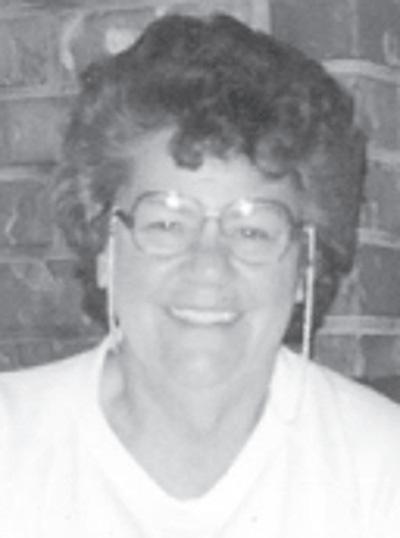

Shreve-Hein
Cody Robert James Shreve Masen Cody Hein
Tragically on September 24th 2018, Cody and Masen were taken from us and WALKED hand-in-hand into the kingdom of Heaven together after a devastating vehicle accident. Forever in our hearts and minds, they will be greatly missed by wife/mother Leanna, sons/brothers Dayln and Aaron as well as Cody’s father Paul Shreve (Jane), mother Lorraine Latham (Dean), sister Fawn Gibson (Jason), Leanna’s grandpa Ralph Kinross, parents Doug and Tracey Hein, sisters Caralee Bergeron (Jason), Taryn Krause (Bill) and extended family including many nieces, nephews, aunts, uncles and cousins.
Cody was born in Vancouver, BC on May 16th, 1978. He moved to the Cariboo as a young child with his family. After meeting Leanna in high school, they built their life together including a love of the outdoors, especially hunting and fishing. After finishing high school, he worked as a millworker, log home builder and for the last 13 years, as a vibration technician with BTA Reliability Centered Maintenance, which relocated the family to Prince George, BC in 2006. He was artistically creative with metal and leather, evident through his many works of art and used his mechanical ingenuity to modify everyday objects and items for Masen, such as his hand-cycle, quads and a carrying backpack for him. Masen was born at BC Children’s Hospital on July 15th, 2009. He was born with Spina Bifida, and used a wheelchair for most of his mobility, but was definitely not confined to his chair. In his short life, no obstacle was too big to take on for Masen. He participated in wrestling, wheelchair basketball, wheelchair rugby, Spartan and Foam obstacle races, swimming and all things outdoors, especially fishing. He was an inspiration to everyone that met him and his gigantic smile. Masen’s motto was “Don’t limit your challenges, challenge your limits.”
Another love of their lives was their church, the Evangelical Free Church of Prince George. Cody and Masen were an integral part of the church by providing audio sound support, being a youth group leader, participating in bible studies, a mission trip to Mexico with Dayln and many other church activities. The celebration of their lives will take place at 11:00 am on Saturday October 13th, 2018 at the Evangelical Free Church of Prince George (4590 Fifth Avenue, Prince George).
In lieu of flowers, donations can be made to the GoFundMe.com account (Shreve-Hein Family Loss) that has been set up to support Leanna, Dayln and Aaron throughout this difficult time and/or to the Spina Bifida Association in honour of Masen.
“Precious in the sight of the Lord is the death of his saints.” Psalm 116:15
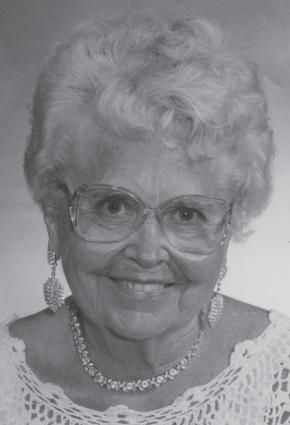
Margaret Mary Enemark
In Vancouver, July 22, 2018, in her hundredth year. Predeceased by her husband, Holger (Spike) and her son Brett. Margaret moved to Prince George from Saskatchewan in 1931 with her father Cyril Watkins and sister Kay. She lived there most of her life and often said her fondest memories were those of her many friends in PG. She raised all three sons there, and was active in the Daughters of the Nile and Eastern Star and In the 1970s managed the Jackpine Motel with Spike. As a widow she moved to the Lower Mainland where she lived for thirty years during which time she wrote a memoir and a book of favorite recipes. She was loved by all and had a positive impact on so many. Survived by her sons Tex (Sandra) and Gordon (Peggy) and daughter in law Candace, her granddaughters Kiersten, Tasha, Ashleigh, Bret, Lucy and Marta, her grandson Blake, great grandsons Mason, Emmett, Cori, and Alexander. A celebration of life will be held at Shaughnessy restaurant at 5251 Oak St. Next to Van Dusen Gardens in Vancouver at 3PM on October 13, 2018.
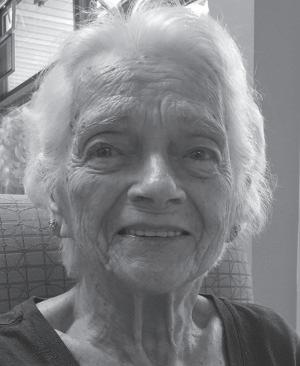
Mooers Laura Evelyn (nee Dubord-Zielke) Apr 28, 1929 - Oct 02, 2018.
It is with very heavy hearts, we announce the passing of our beautiful loving mother Ev. Born in Winnipeg, moved to Vancouver in the late 40’s where she met and married George, with whom she had her children, moved to Prince George in 1950. Predeceased by; Parents Thomas Dubord (Canada) Miriam Cook (England). Daughter Susan Laura (Ross) and Son Milton William Sterling Zielke. Husbands George Zielke , John Mooers. Sisters Ellen, Greta, Sybil. Mom leaves: Daughter April (Jerry) Selinger Sons David (Pam ) Zielke, Scott (Laurie) Zielke Grandchildren: Rod (Regan), Karry (Tim), David (Sheli), Natalie(Beau), Laura (Zane), Anna (Scott), Sarah (Colton), Brandy (John-Eric), Ben (Alie), Jessica (Scott) Colin (Nicole). Fifteen great grandchildren, two more arriving soon. Numerous nieces, nephews, in-laws, work, travel and pool friends. Mom was known for her open mind, acceptance of all, her loving ways, kindness and her wicked sense of humor. Love of animals, music, dancing, travel, shopping, fashion, hunting, fishing, cooking and holidays. Special thank you to the Nurses, Care staff and YMCA Volunteers at the Simon Fraser Lodge. In lieu of flowers please make donations to the Royal Canadian Legion and the SPCA. No funeral by her request. A private celebration will be held at a later date.
BUSINESS OPPORTUNITY
Established Franchise Tax Preparation BusinessMackenzieservicing and McLeod Lake area for over 30 years. Gross Revenues of $85,000
DOUGLAS WILLIAM WIPFLI
July 31, 1939October 3, 2018

With great sadness we say goodbye. He will be missed. He has died peacefully. Doug will always be remembered for his warm smile and kind heart. A Celebration of Life is scheduled October 6, 2018 at Spruce Capital Seniors Center, 3701 Rainbow Dr from 1:003:00pm. Pastor Jeff Hallmark will officiate. Come and help us celebrate.
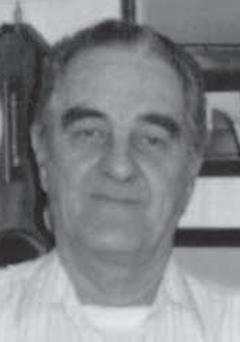
Maurice Dorlie Dube March 10, 1934September 21, 2018
Maurice is survived by his wife, Eldrid; sons, Kelly (Linda), Karey, Kim, Jason; grandchildren, Alyssa, Carson; brother Larry Dube (Betty). He was predeceased by his parents, Adeaudat and Edna; brothers, Herman, Aurele, Clarence and sister, Clarice.
A funeral service will be held at Sacred Heart Cathedral on Wednesday, October 10, 2018 at 10:30am. Father John Garden will be officiating. In lieu of flowers, donations may be made to a charity of your choice. Prince George Funeral Service in care of arrangements 250 564 - 3880.























01-ANTIQUES & COLLECTIBLE STORE CLOSING. 5100 N Nechako Rd 9am - 4pm
All must go, show cases, cabinets, antiques, collectibles. Will be running all week long starting Sept 24, 2018

















































These are indicative wholesale rates for
vided by the Bank of
on Friday. Quotations in Canadian funds.

TORONTO
Thursday as U.S. government bond yields hit a seven-year high on more news confirming the strength of the American economy.
The move by the 10-year U.S. Treasury yields is a big deal, said Kash Pashootan, CEO and chief investment officer at First Avenue Investment Counsel Inc.
The level follows clear confirmation by Fed Chairman Jerome Powell that interest rates will gradually increase for the foreseeable future.
“The speculation or the doubt that existed before in terms of the frequency of how rates will go up was put to rest yesterday with Fed Chairman Powell’s comments,” Pashootan said in an interview.
That assessment comes ahead of an anticipated big beat in Friday’s jobs report.
“The big surprise is that interest sensitive equities are in fact not selling off with the news that the rates are going higher, which is counterintuitive,” said Pashootan.
The S&P/TSX composite index closed down 65.38 points to 16,006.67, after hitting a low of 15,928.16 on 252.9 million shares traded. Gold, industrials, telecom and materials ended the day in positive territory. Health care led on the downside, falling about three per cent on a 5.8 per cent drop by Bausch Health Companies Inc. and lower cannabis stocks. Information technology, consumer discretionary and utilities sectors followed. In New York, the Dow Jones industrial average followed Wednesday’s record high by posting its worst day since July 11. It lost 200.91 points to 26,627.48.
The S&P 500 index was down 23.90 points at 2,901.61 while the Nasdaq composite was down 145.57 points at 7,879.51. Pashootan said markets have been volatile after aggressive U.S. tax cuts were a catalyst for the strong performance of U.S. equity markets in 2018.
He said markets are more sensitive to bad news, which is healthy coming so late in a cycle that has seen valuations climb.
The Canadian dollar traded at an average of 77.52 cents US compared with an average of 77.93 cents US on Wednesday on a run up of the U.S. greenbacks.
The November crude contract was down $2.08 at US$74.33 per barrel and the November natural gas contract was down 6.5 cents at US$3.16 per mmBTU.
The December gold contract was down US$1.30 at US$1,201.60 an ounce.
Terry PEDWELL Citizen news service
OTTAWA — The union representing 50,000 employees at Canada Post panned the latest contract offers from the corporation Thursday, calling them “disappointing” and keeping alive the threat of a work stoppage as the busy holiday online shopping season approaches.
Two separate offers for rural and urban carriers included “very small movements” toward resolving some key issues, said the Canadian Union of Postal Workers.
On a proposal directed at rural carriers, the union said, “We have a long way to go to achieve a negotiated collective agreement.”
The possibility of a work stoppage has hovered over Canada Post since Sept. 26 after postal workers voted overwhelmingly in late summer in support of a potential walkout to back their contract demands.
But that initial deadline passed without any job action being launched, with CUPW saying it would stay at the bargaining table so long as there was progress in the talks.
That position had not changed Thursday, said CUPW national president Mike Palecek.
“Those are discussions that we’re having daily, based on developments,” he said.
Job action could include a full or partial walkout, or a lockout, after a 72-hour notice period.
The threat of a work stoppage over the holidays has forced companies that rely on Canada Post for parcel deliveries to make alternative plans to ensure their customers receive orders. However, it may be difficult to fill all of the service gaps in the event of a shutdown.
Canada Post is the biggest parcel shipping company in the country, having delivered about one million parcels per day during
the holiday season last year - an increase of 20 per cent over the same period in 2016.
Utilities have also been urging their clients to register for online billing, reminding them that invoices must still be paid regardless of whether they are mailed out.
Canada Post said its global offers to rural and urban carriers include improvements to pay, benefits and job security.
But the job security proposals are limited, particularly for rural and suburban carriers, CUPW said in a statement on its website.
“For those eligible to job security, Canada Post would be allowed to assign you or not to a vacant position within a 75 km radius from your installation,” the union said.
“This is a very complex proposal and a substantial amount of clarification is required to fully understand its impact.”
Canada Post also rejected
demands that those same carriers get paid an hourly rate - and for all hours worked - and that the corporation guarantee minimum hours, said CUPW.
For both rural and urban carriers, the post office offered wage increases of 1.5 per cent annually under a four-year contract - virtually unchanged from proposals tabled Sept. 7. The union is seeking a 3.5 per cent hike in pay.
“The offers are disappointing,” said Palecek.
“Canada Post still hasn’t addressed any of our major issues.”
CUPW has been pushing Canada Post to offer banking services in communities underserved by the big financial institutions.
The Crown agency’s latest offer proposes “a selected set of new financial services,” a move Palecek described as encouraging.
But he noted that no details about what those services might involve or when they could be launched have been forthcoming.
Terry PEDWELL Citizen news service
OTTAWA — Canada’s job market gained 63,000 positions in September, edging the unemployment rate lower to 5.9 per cent, and offsetting job losses in August, Statistics Canada reported Friday.
September’s increase in employment was largely driven by gains in part-time work, with part-time jobs up by around 80,000, the agency said in its monthly labour force survey.
Economists had estimated the country would add 25,000 jobs in September, according to Thomson Reuters Eikon.
The job gains were also almost entirely in Ontario and British Columbia, with little change in the other provinces.
The latest monthly report from Statistics Canada indicates the jobs market remains volatile, after August saw a decline of more than 51,000 positions, raising the unemployment rate to 6.0 per cent, after two months of increases.
On a year-over-year basis, Canada gained 222,000 jobs since
September 2017.
South of the border, the unemployment rate in the United States dropped more than expected, to 3.7 per cent in September from 3.9 per cent the previous month, as 134,000 jobs were created, well below analyst predictions of a 185,000 jobs surge.
Statistics Canada also reported the Canadian international merchandise trade balance improved in August, recording a surplus for the first time since December 2016. It said imports fell by 2.5 per cent and exports declined 1.1 per cent, producing a surplus of $526 million compared with July’s $189 million trade deficit.
Group chief economist Doug Porter.
“The big picture is that the economy overall is looking a bit better than anticipated, with the bias now squarely to the upside on growth,” Porter headlined in a note to clients.
But the fact that the job gains were part-time, and the trade surplus was the result of declines in both imports and exports, takes some of the shine off the numbers, said Royce Mendes at CIBC Capital Markets.
The job gains were almost entirely in Ontario and British Columbia, with little change in the other provinces.
Taken together, the jobs and trade reports paint a rosier economic picture than anticipated, increasing the likelihood that the Bank of Canada will increase its trend-setting interest rate later this month, said BMO Financial
Statistics Canada’s monthly labour force survey found that all of the job gains in September were made by workers in the core 25-to-54 age range with virtually no change in youth employment. September’s youth unemployment rate stood at 11.0 per cent, up by 0.1 percentage points from the previous month. Men in the core age bracket gained the most, with 34,000 jobs while women also saw increases
of 20,000 positions.
The agency said the number of self-employed Canadians declined by 35,000 after recording an almost equal total increase over the past twelve months.
Many of the jobs were found in construction, up by 28,000 in September, reversing two previous monthly declines.
Around 13,000 jobs were added in finance, insurance, real estate and rental and leasing, mostly in Ontario and Alberta.
Employment increased by about 12,000 in the public sector, which has seen a rise of about 20,000 jobs overall since last September.
The agriculture sector also saw gains of about 9,000 jobs, offsetting continuous declines seen since May.
Statistics Canada also released third quarter employment numbers for the territories, reporting gains of 500 and 900 jobs in Nunavut and the Northwest Territories respectively while 400 job losses were recorded in Yukon. The numbers were compared with the second quarter and based on a three-month rolling average.

Chico HARLAN Citizen news service
By age nine or 10, she had her first doubts about the faith, and not long after, she felt confident telling her parents: The Catholic Church, Agata Leoniddi said, seemed “outdated and backwards.”
The language at mass was archaic. The teaching was rigid and unwelcoming. And some of the issues most important to her – including gender equality – were not discussed in church, where the leaders were entirely male. Leoniddi had spent her childhood within the church, but more and more, she was reaching the conclusion of so many young people in the developed world who’ve abandoned organized religion and, in particular, the scandal-riddled Catholic faith.
“I don’t think the church understands my generation,” said Leoniddi, now 12, who lives in a village among rolling hills 80 kilometres outside of Rome. “We are not like our grandfathers.”
The failure to attract and retain young people has become a central focus this month as the Vatican holds a major summit on the topic of youth within the faith. Among the pressing questions is whether an institution often criticized as out of touch can regain relevance for a younger generation – and whether the church’s powerbrokers are willing to listen to what those people have to say. At a particularly divided moment within the church, the discussion doubles as an ideological debate over the church’s future, particularly on the extent to which Catholicism should modernize its teachings on sexuality and gender under a pope who has been pushing to adopt a more inclusive tone.
the public. Three dozen carefully selected Catholics between age 18 and 29 have also been invited – a number that Cardinal Sérgio da Rocha, one of the organizers, said was limited by the space inside the Vatican meeting hall. The event is not believed to include any lapsed Catholics, but one of the synod attendees said he sees the result of defections all around him.
“I am almost reliably the youngest person in any church gathering I go to – and that is a problem,” said Jonathan Lewis, 32, the assistant secretary for pastoral ministry and social concerns at the Archdiocese of Washington. “That’s why this synod is so important. Young people feel lonely and anonymous in our churches.”
For decades, the Catholic Church has been trying to reshape its message for a younger audience, though without much success.
Polling and data suggest that the abandonment of organized religion is a defining trait of the world’s young – and even in predominantly Catholic countries like Italy, mass attendance is on the decline.
In Vasanello, Leoniddi’s hometown, “those who go to church are looked at as freaks,” said Fabio Santini, a university professor who leads a church-affiliated youth scout group.
Leoniddi is a part of that scout group, and, at moments, she feels at home in her church. She has been going there for as long as she can remember. Only now, she is attending mass less often. She thinks gays and lesbians should be more welcomed. She thinks women should be ordained as priests. Her parents say she will drift back to the church as she gets older. Leoniddi says she probably won’t.
“The fact that it’s just men (as priests) – it was like that when the church was formed,” she said. “It’s so old fashioned.”

The other key issue is whether the carefully stage-managed event – more than a year-and-a-half in the making – will address clerical sexual abuse within the church. Some outsiders say the discussion can only be meaningful if bishops take on the topic, rather than waiting for a February church meeting on abuse.
Pope Francis recently acknowledged that scandals were driving the young away from the religion. The archbishop of Philadelphia, Charles Chaput, called on Francis in August to cancel the youth meeting altogether, saying the bishops have “absolutely no credibility” to address the topic.
The month-long advisory meeting of several hundred leading bishops, known as a synod, began Wednesday and is closed to
For decades, the Catholic Church has been trying to reshape its message for a younger audience, though without much success. A Vatican document prepared for this synod emphasizes the importance of “listening to young people” and mentions many of the challenges facing that generation: poverty, environmental degradation, technology, even fake news. The document – which will be debated, revised, and then voted on – also touches on hot button social issues, though without much clarity.
“Many believe that ‘the sexual question must be discussed in a more open and unbiased way,’” the Vatican’s document says. Some church watchers say it is the first Vatican text to use the acronym LGBT; the document says that some “LGBT youths” want to “experience greater care by the Church.”
Amid that agenda, Chaput, a high-profile conservative, has called on the church to
Whenever I ride the bus in Prince George I enjoy the chorus of thank-yous as passengers disembark. It is one small sign that gratitude is not dead in our city. As we celebrate Thanksgiving Day this year, let us make thanksgiving a habit. Many cultures celebrate thanksgiving through a harvest festival. The American pilgrims celebrated Thanksgiving after their first harvest in the new world. In many countries Thanksgiving coincides with the fall harvest. Though most of us no longer live in farming country, there is still something very satisfying about stuffing ourselves with turkey and a bountiful supply of fresh fruits and vegetables, topped off with pumpkin or apple pie.
discuss abuse, writing in an Italian newspaper that a meeting “dealing with youngsters and sexuality should also tackle – in an honest and thorough manner – the roots of clerical sex abuse involving minors.”
Another American who was supposed to attend, Cardinal Joseph Tobin of Newark, withdrew from the synod as he deals with the consequences of an abuse scandal in his own diocese, involving recently-resigned cardinal Theodore McCarrick. Meantime, a Dutch bishop has said he is boycotting the event because of the Vatican’s handling of abuse.
The Catholic Church this year has faced a series of abuse-related cases that, taken together, suggest that the Vatican has not done enough to hold accountable higherups that protected abusive clerics. In August, an archbishop accused Pope Francis of knowing about McCarrick’s sexual miscon-
duct misbehavior five years ago and taking no action. Neither Francis nor the Vatican has responded to the allegations.
“The pope is remaining silent: that’s incomprehensible, truly incomprehensible,” the Dutch prelate who is boycotting, Bishop Robert Mutsaerts, told LifeSite News, a conservative Catholic publication. “And then carrying on with the agenda. ... If there’s one thing we cannot do, it is that.”
At a news conference this week to kick off the synod, a journalist asked Cardinal Lorenzo Baldisseri, one of the organizers, how the issue of abuse would influence the event. Baldisseri did not directly talk about abuse in his answer, but said the church had a chance to show its worth to the young.
“The church is not represented by some who do wrong, but something more important and fundamental, since, as they always say, the church is saint and sinner,” he said.
It is harder to give thanks when circumstances turn sour. In spite of the prosperity of our society, many don’t enjoy the benefits others take for granted. It can be a struggle to survive one day at a time. Others face tragedies of poor health, broken family relationships, loss of employment or death of a loved one.
To “give thanks in all circumstances,” to be joyful even in trials, does not come automatically. Even in the worst circumstances we can find things for which to
Yet in North America it is easy to take prosperity for granted when our grocery stores are crammed with a dazzling array of fresh fruits and vegetables, baked goods, canned or frozen foods, fancy desserts and treats. Let us use this Thanksgiving to express our gratitude for the bounty we enjoy, not just in food, but in clothing and shelter, safety and security, and the love of family and friends. And let us look up to give thanks to the One who has so graciously filled our needs, in the words of the psalmist, “Give thanks to the Lord, for he is good; his love endures forever.”
give thanks – the smile of a stranger, an act of kindness, the beauty of fall flowers or a sunset, or words of comfort or encouragement from a family member. We can learn even in the midst of pain and chaos to find that the Lord is good and his love endures forever, and still give thanks.
Thanksgiving is a good time to begin the habit of daily gratitude. This is choice. We can look at what we do not have and grumble; we can focus on our pain and distress and complain; we can look at what others have and feel sorry for ourselves. Or we can reflect on blessings we enjoy, love we experience from friends, and above all the many blessings we have experienced from the hand of God.
The apostle Paul says, “For you know the grace of our Lord Jesus Christ, that though he was rich, yet for your sakes he became poor, so that you through his poverty may become rich… Thanks be to God for his indescribable gift!”
When we realize the extent of God’s love, we can be truly thankful every day, and become generous towards others.
HOUSTON — A third person accused a Houston-area Catholic priest on Thursday of sexually touching him when he was a teenager, in a case that has brought unwelcome attention to the high-profile cardinal leading the American church’s response to sexual abuse.
Cardinal Daniel DiNardo of the Archdiocese of Galveston-Houston is already accused by two other people of disregarding their reports against Manuel La Rosa-Lopez, the pastor at St. John Fisher Catholic Church in the Houston suburb of Richmond. La Rosa-Lopez was arrested in September and charged with four counts of indecency with a child.
Adam Dinnell, an attorney for the third accuser, said Thursday that the accuser says he was an altar boy at a Houston church in the mid-1990s when La Rosa-Lopez fondled him four or five times. Dinnell declined to identify his client or the church. DiNardo came to Houston in 2004.
Dinnell says the accuser’s family reported La Rosa-Lopez and that they met with a priest at the church. But his client felt during that meeting that he was being brushed off, Dinnell said.
